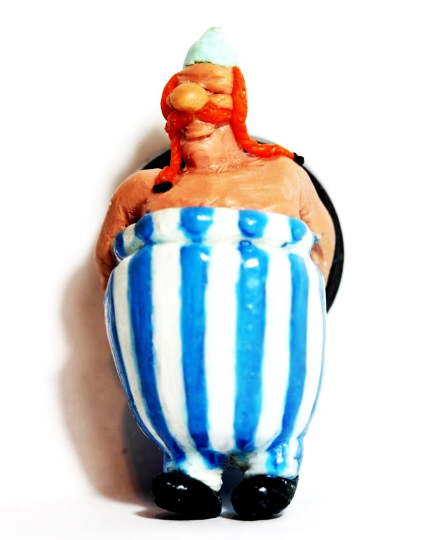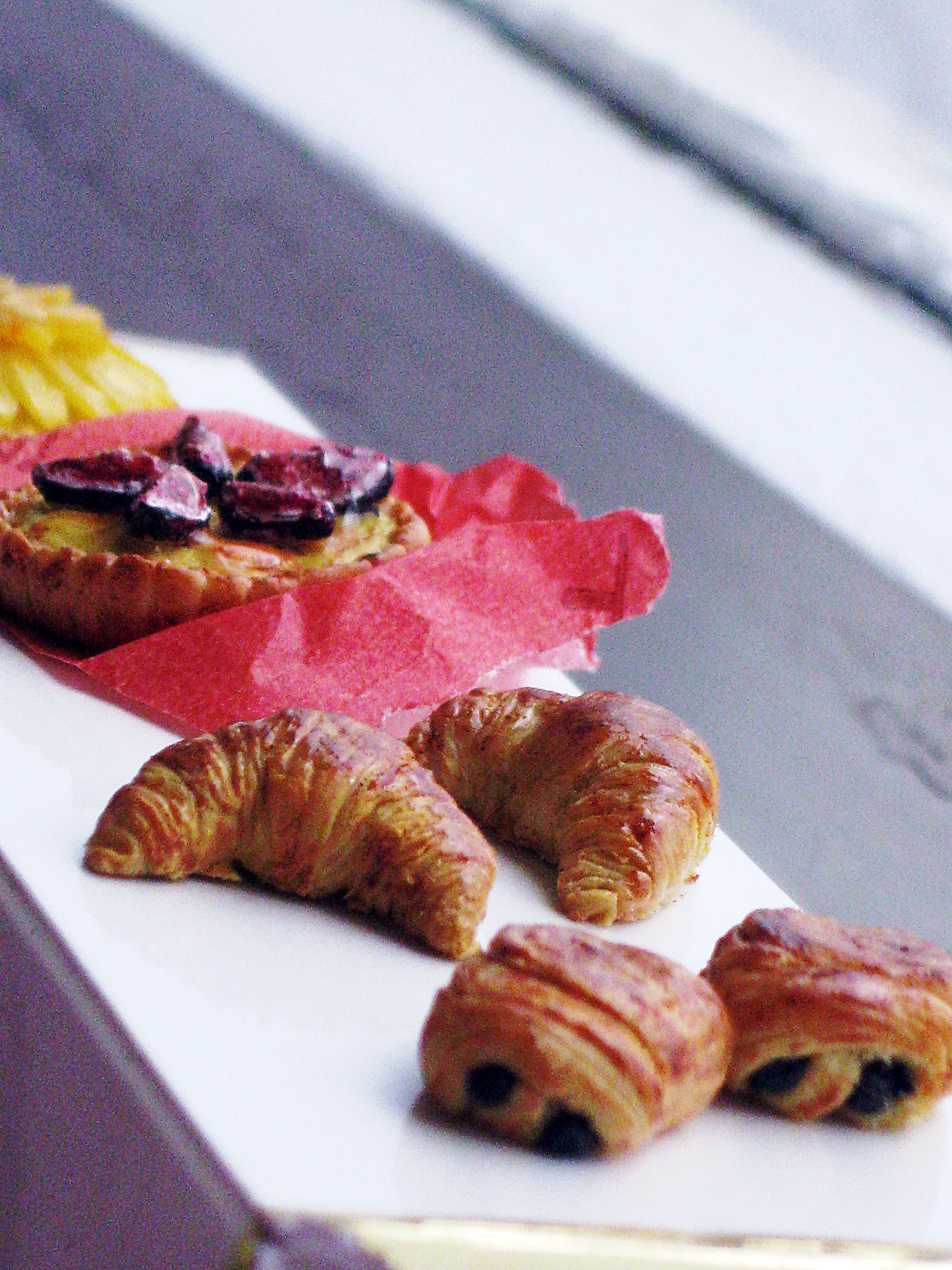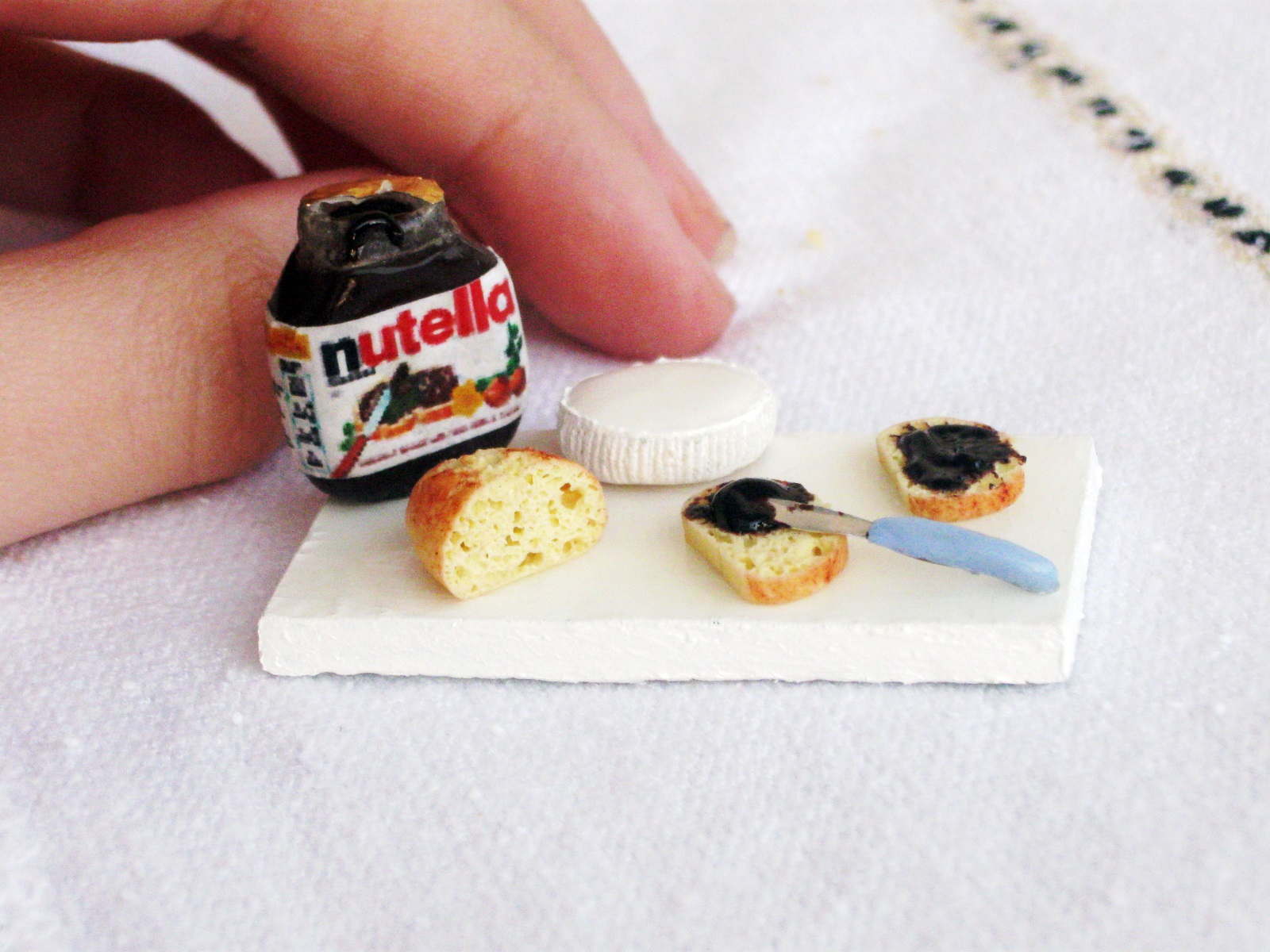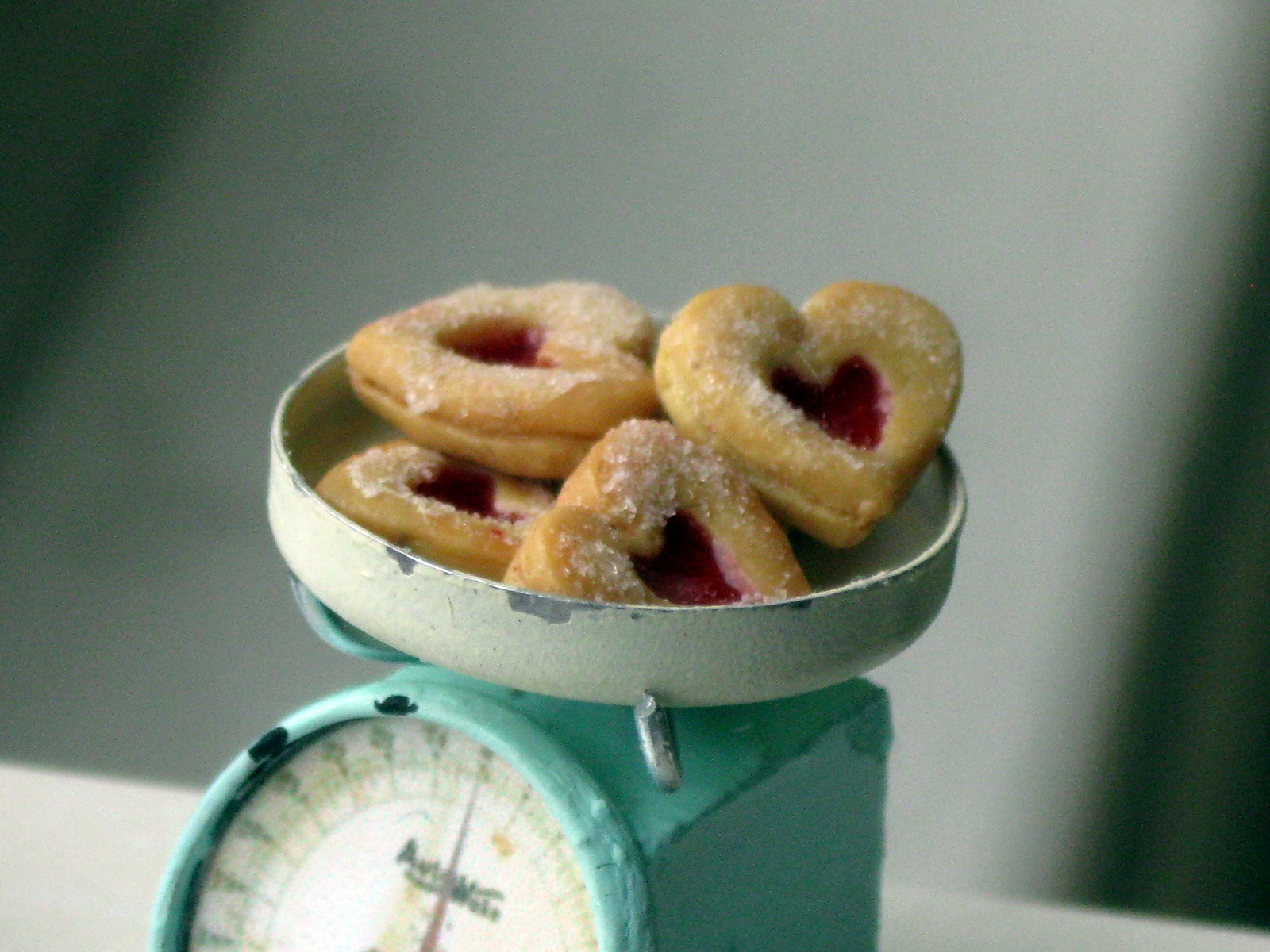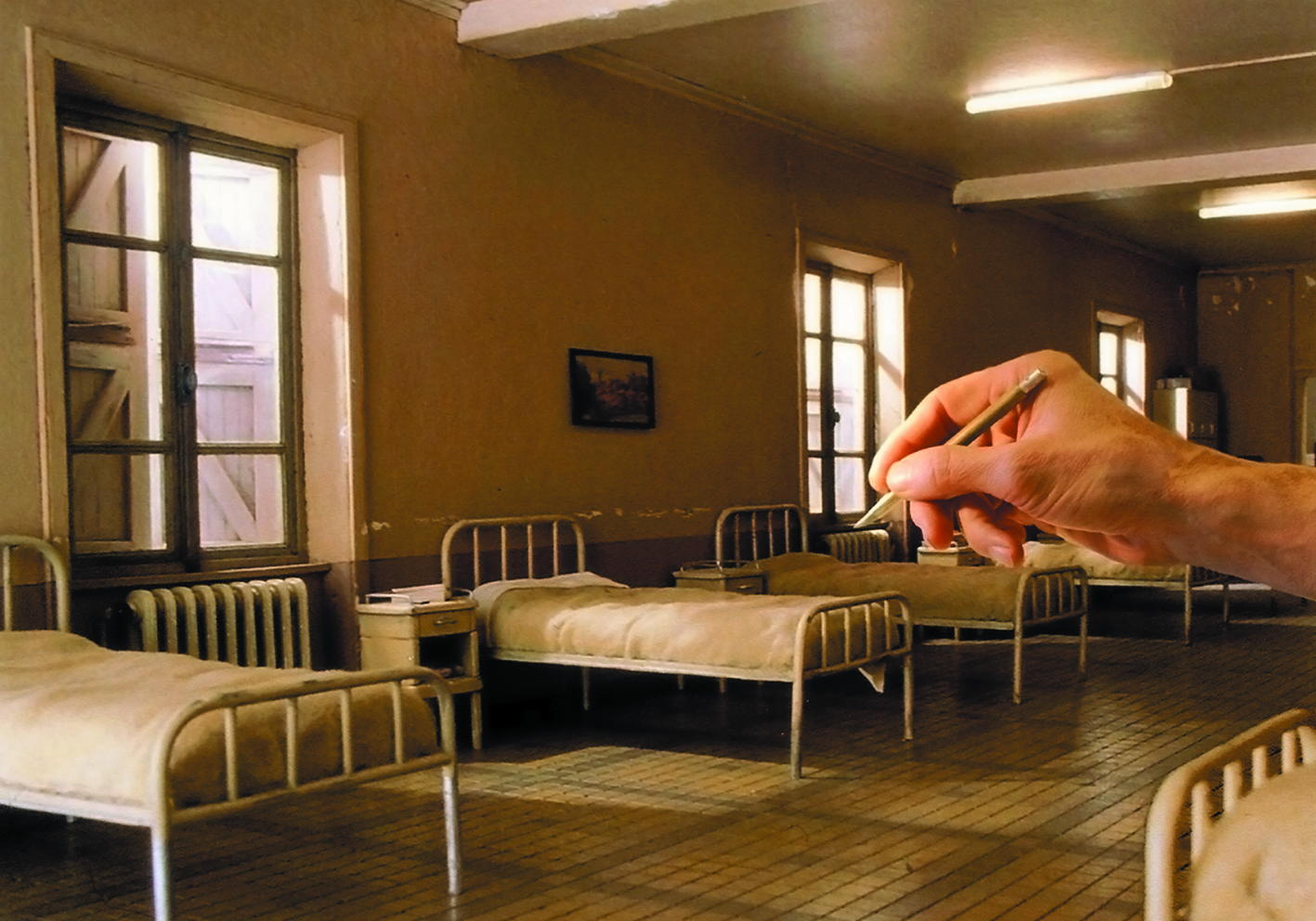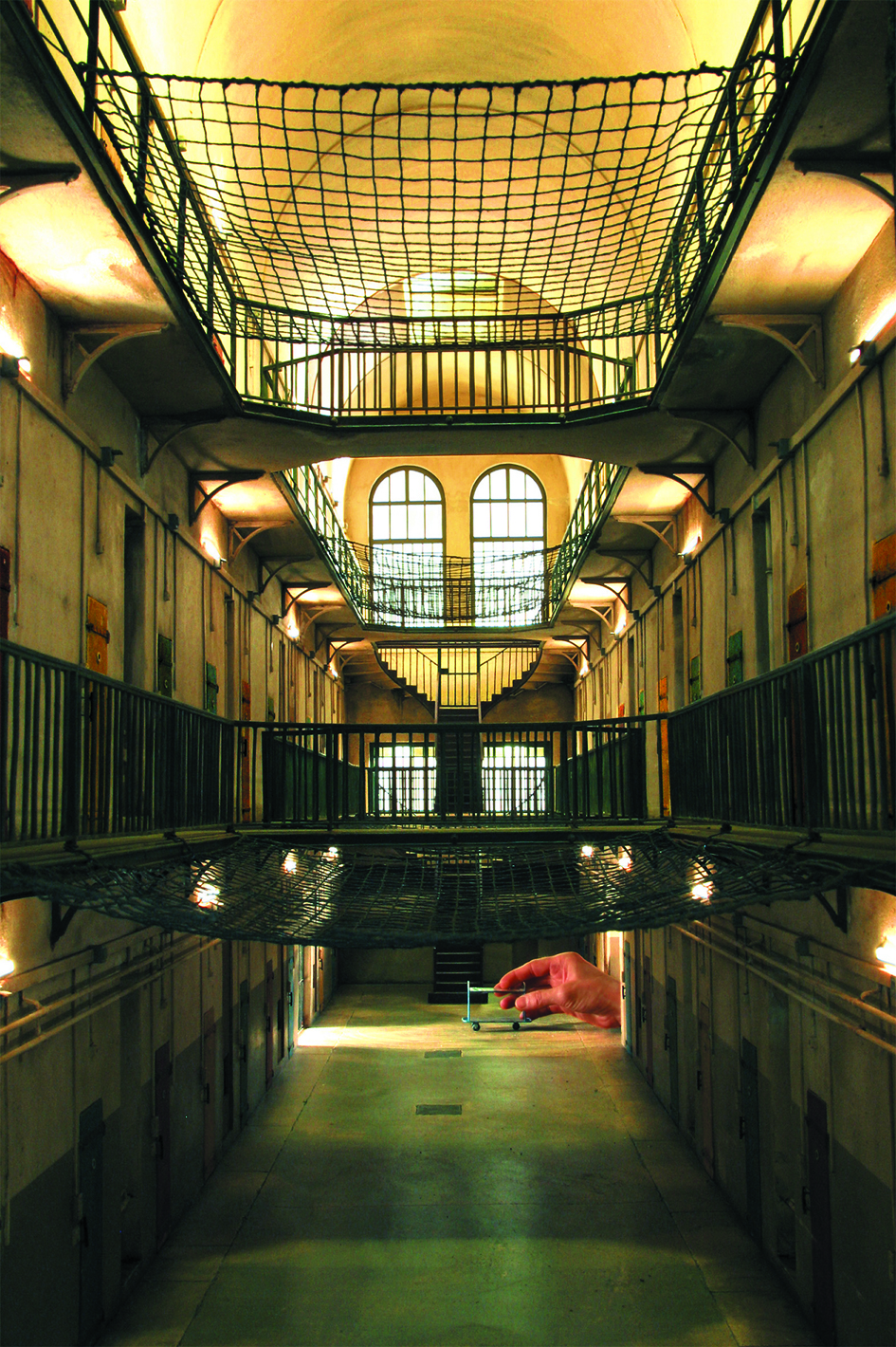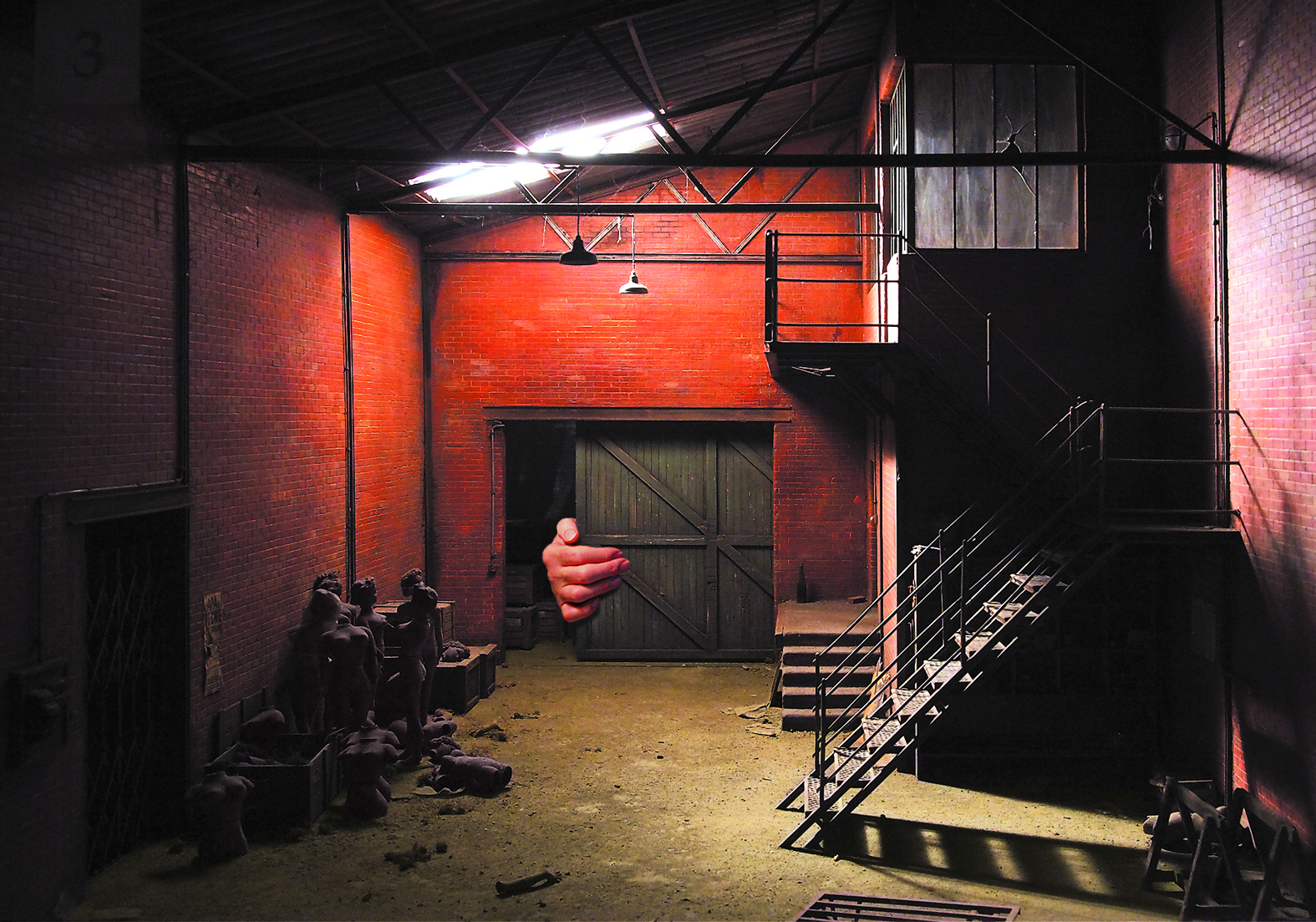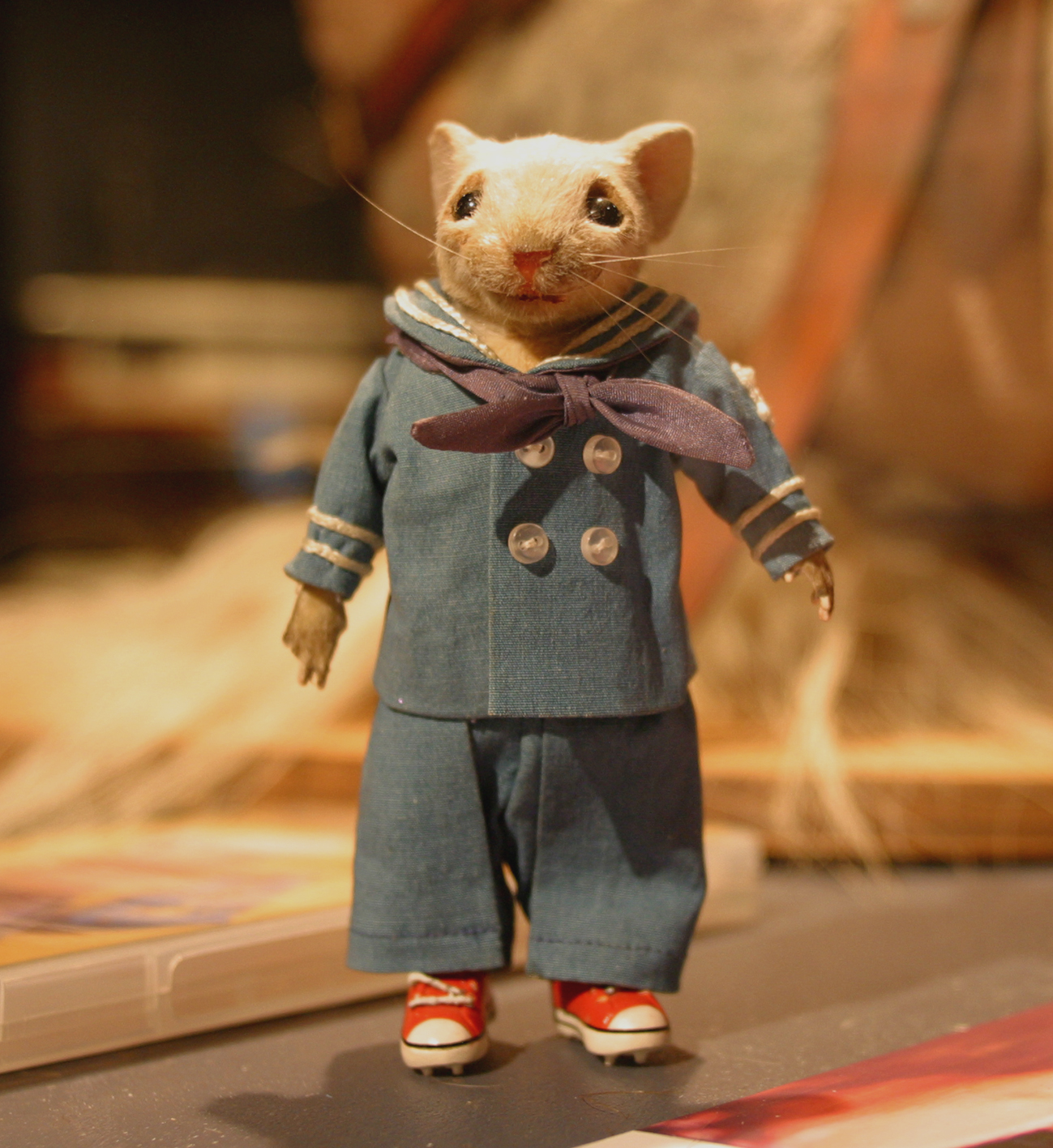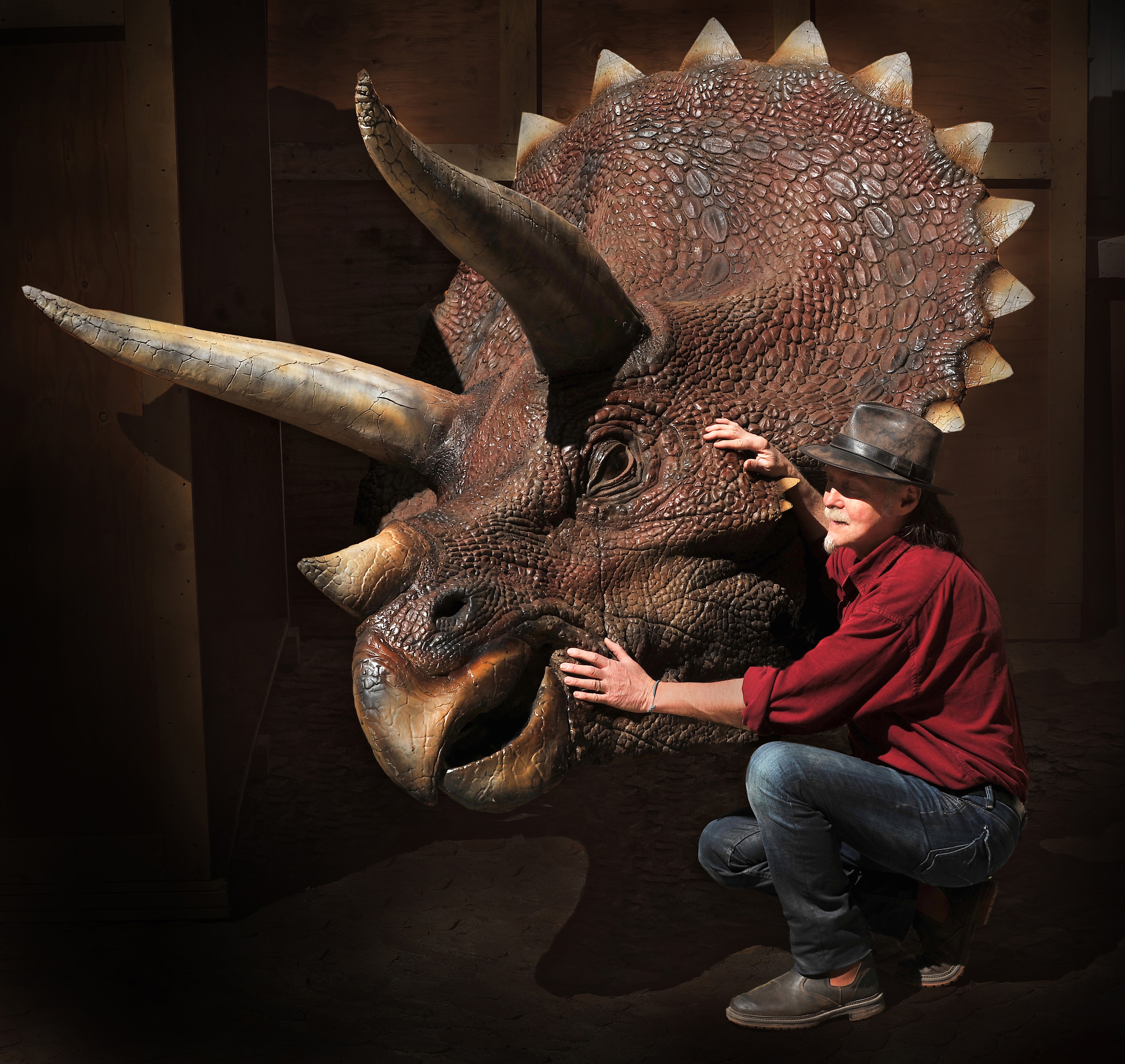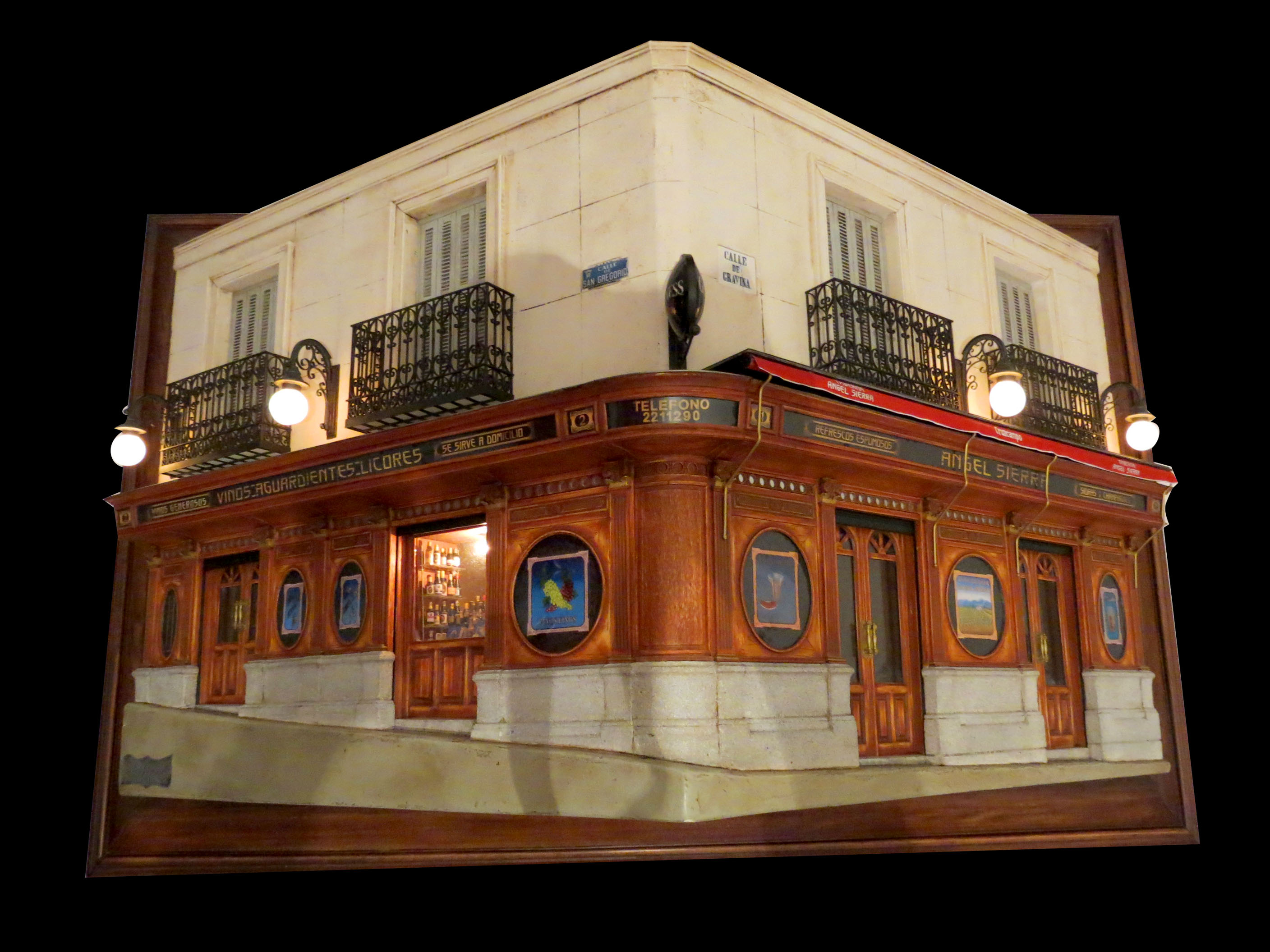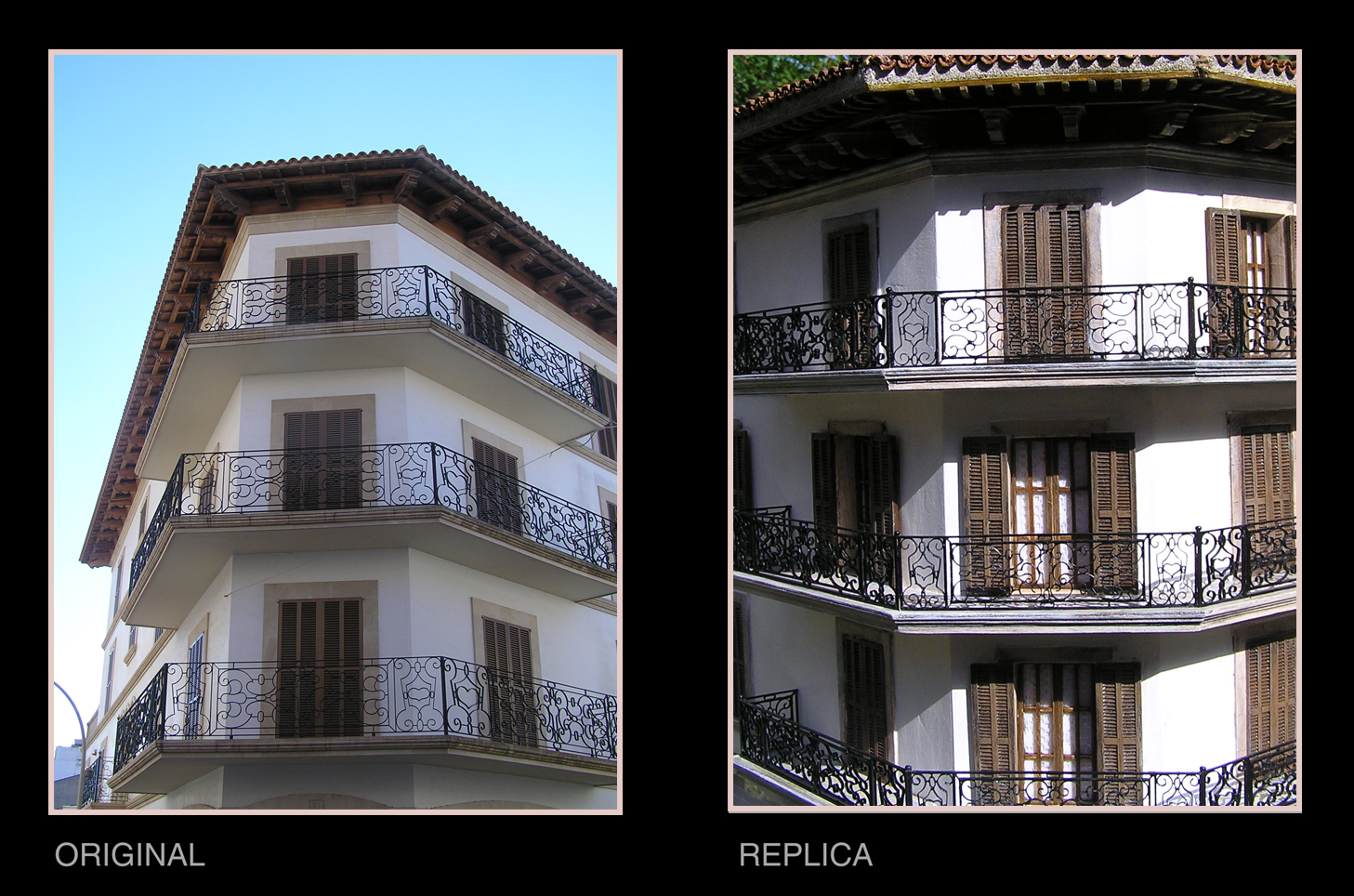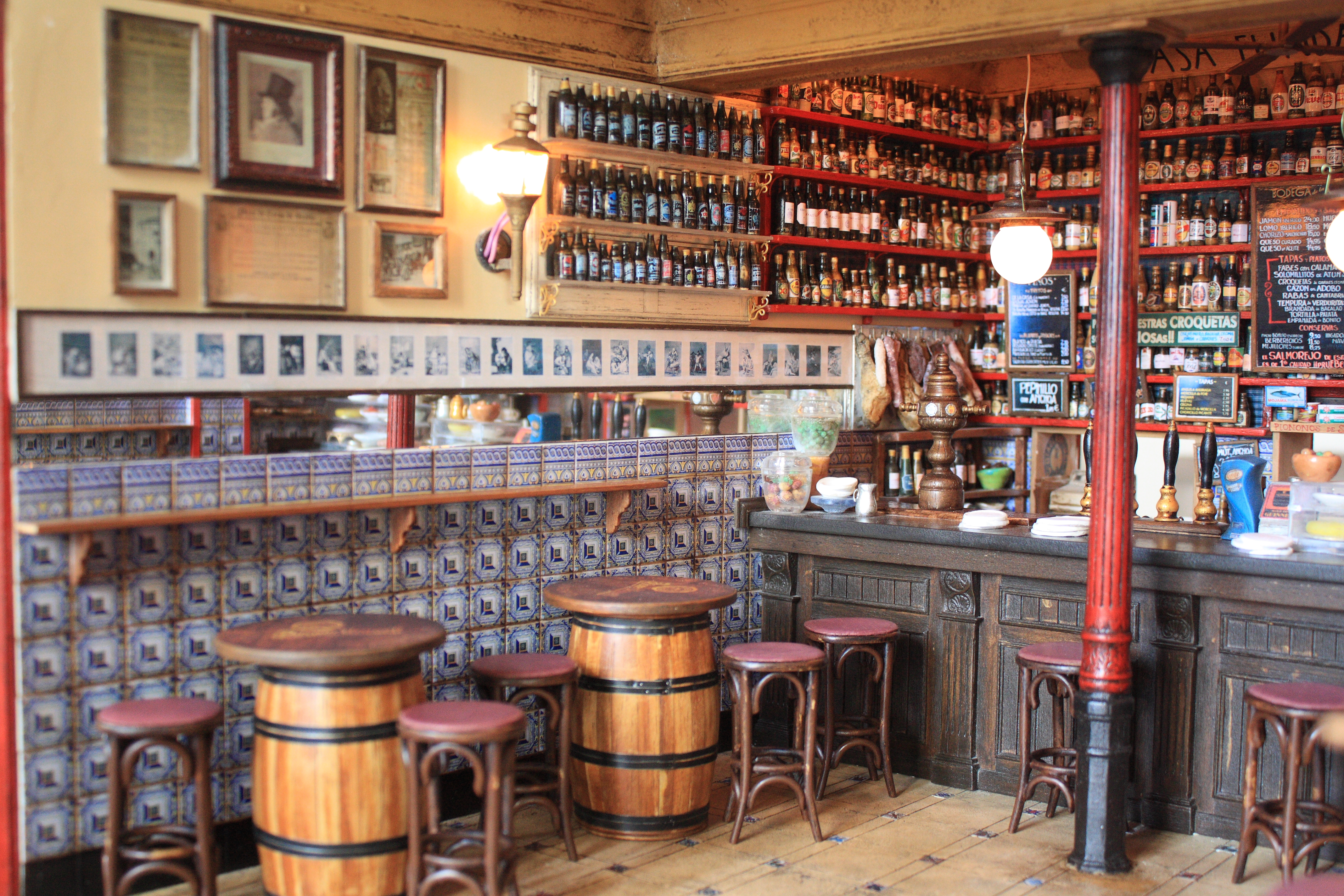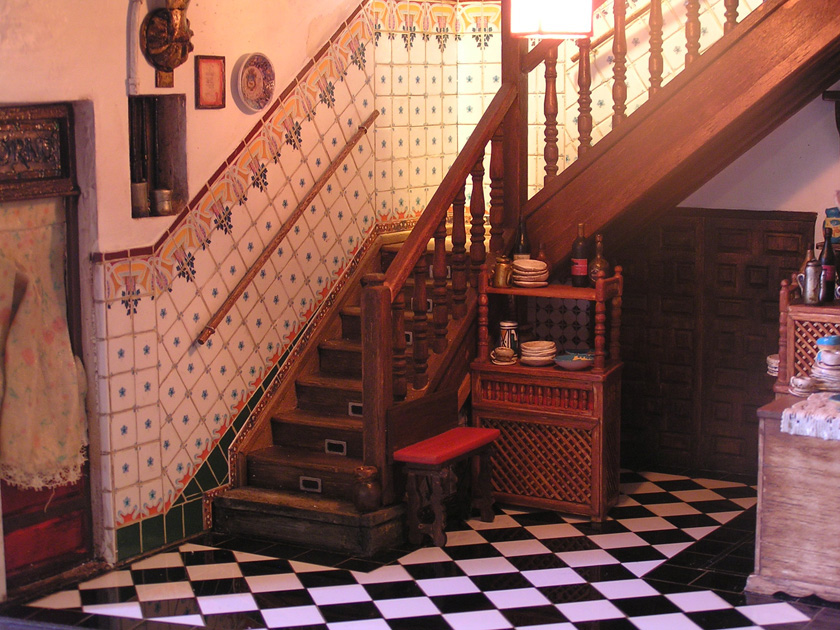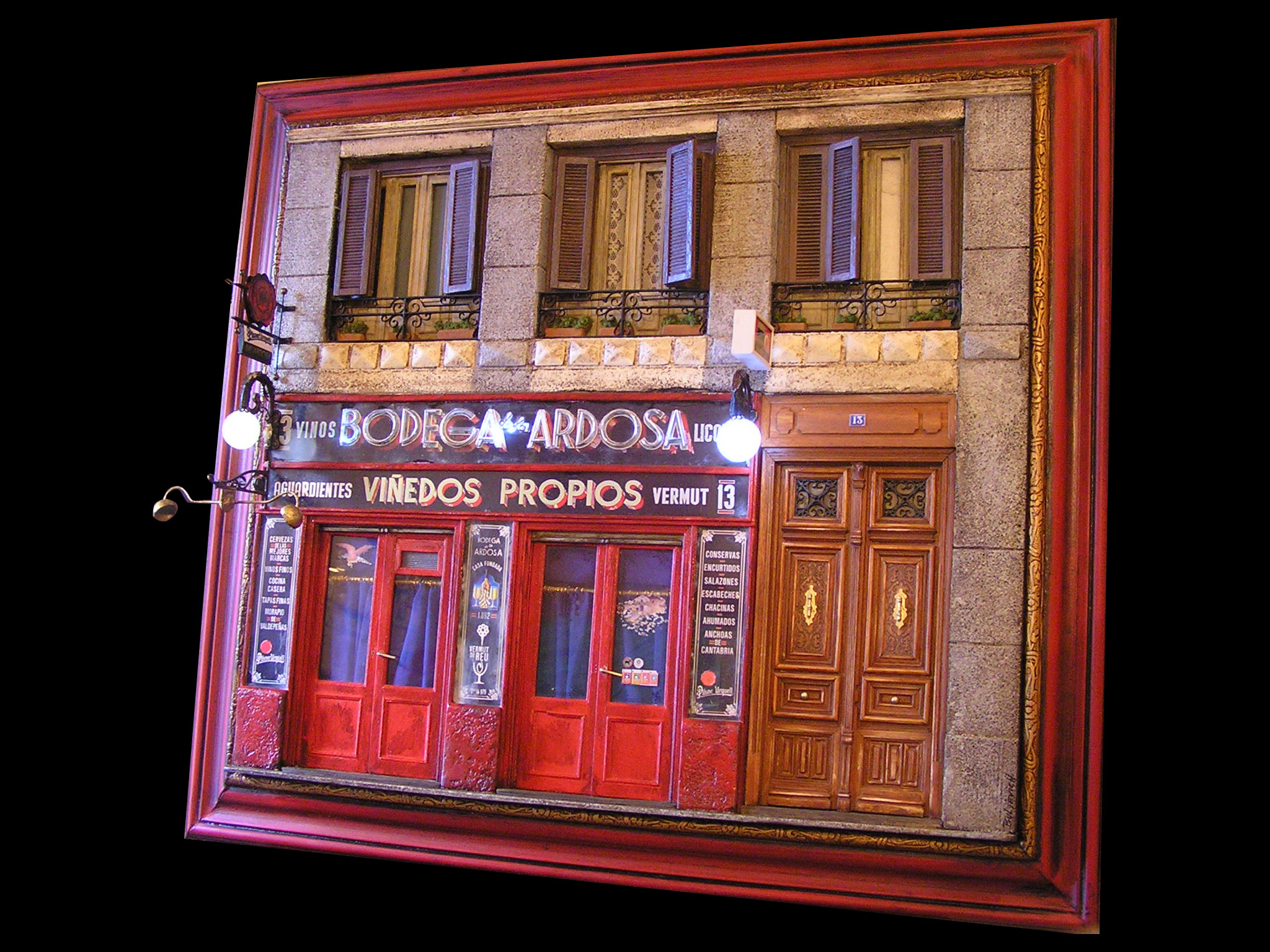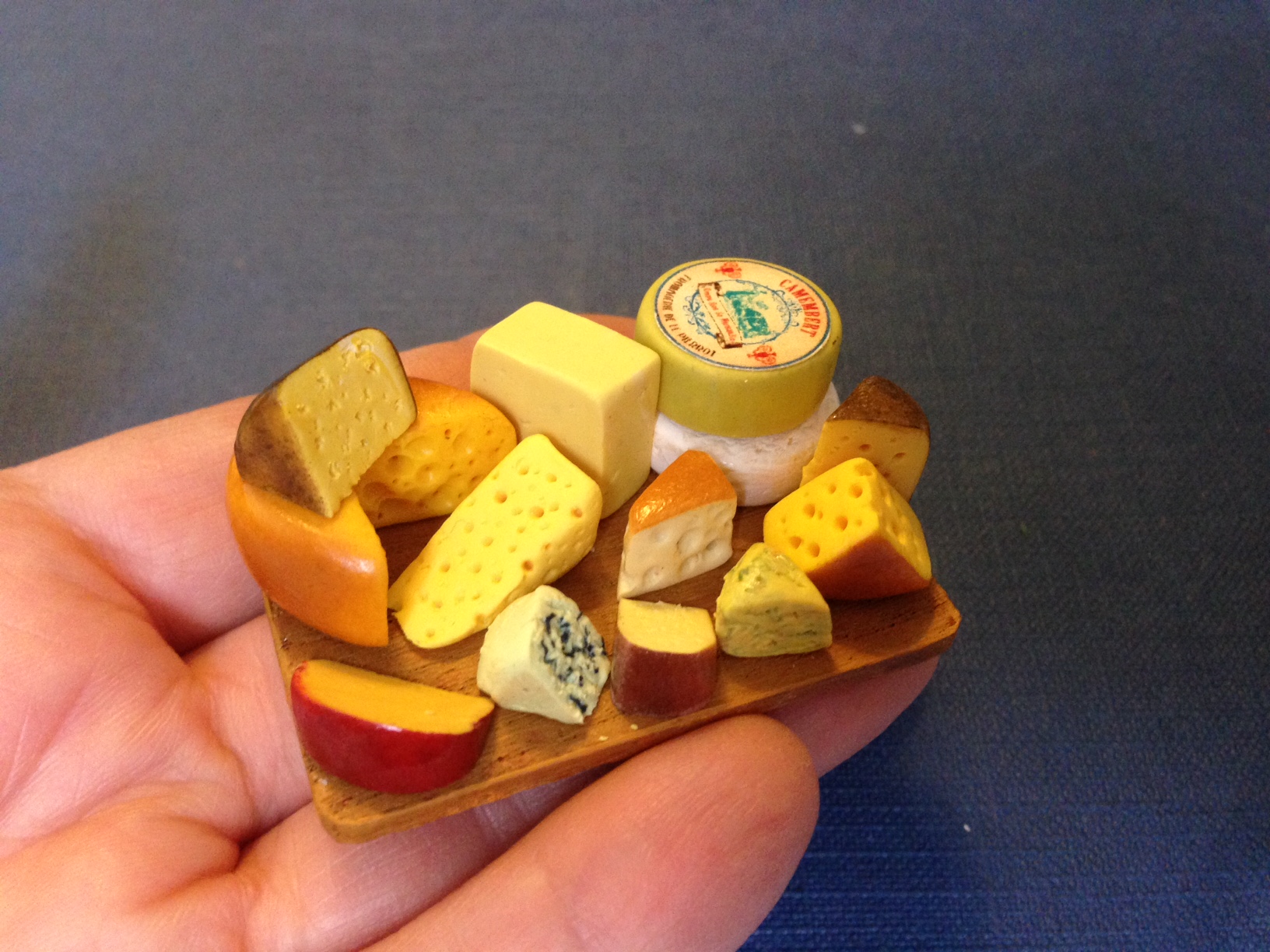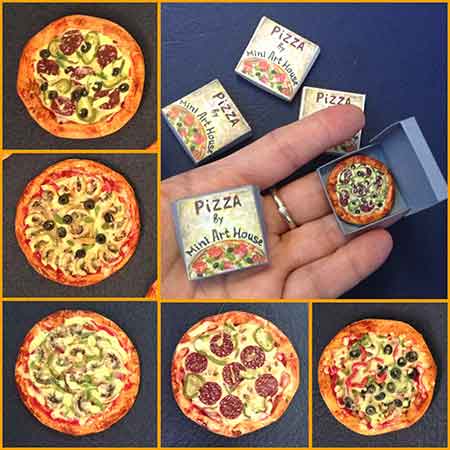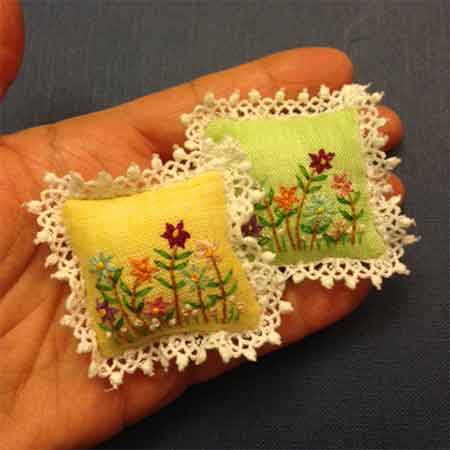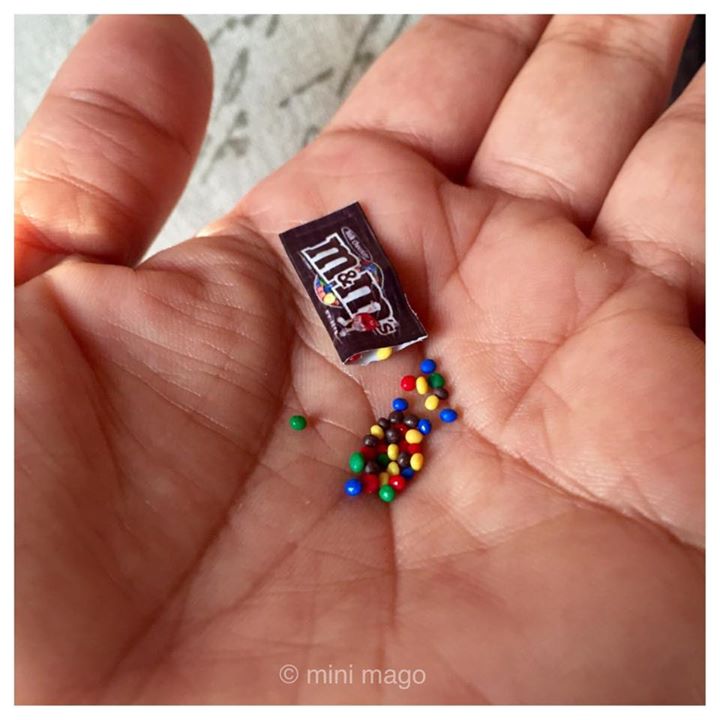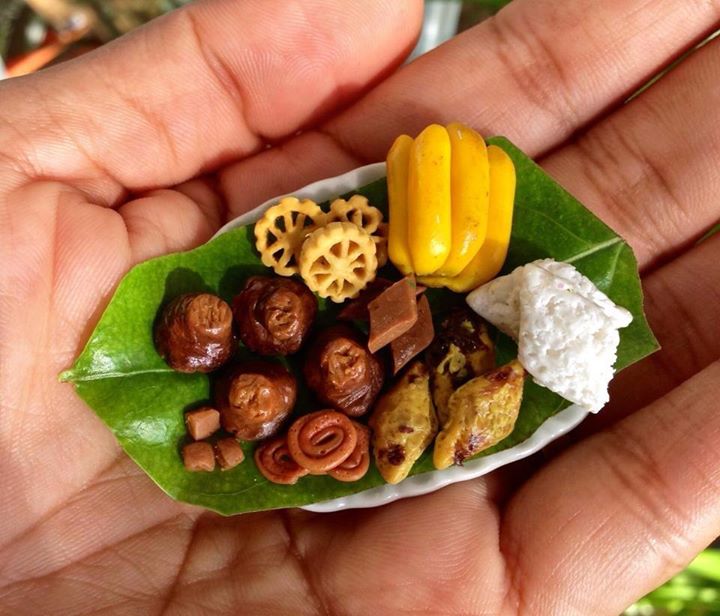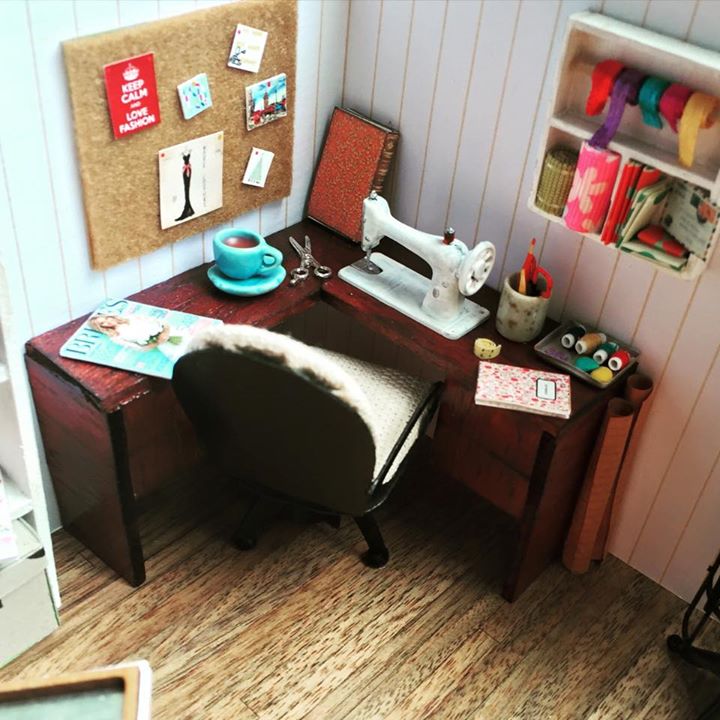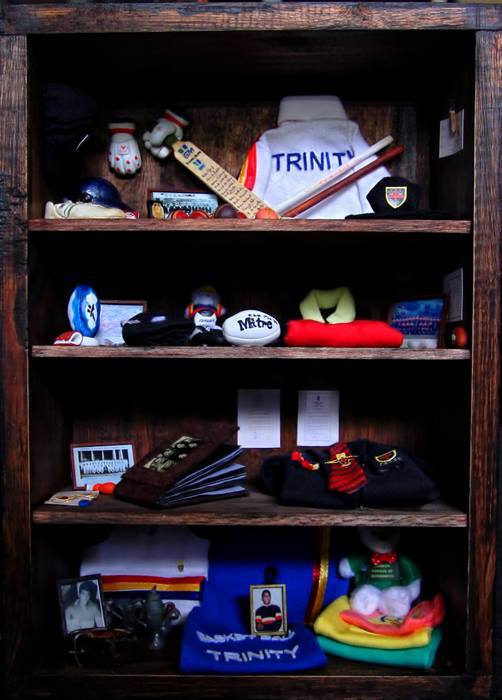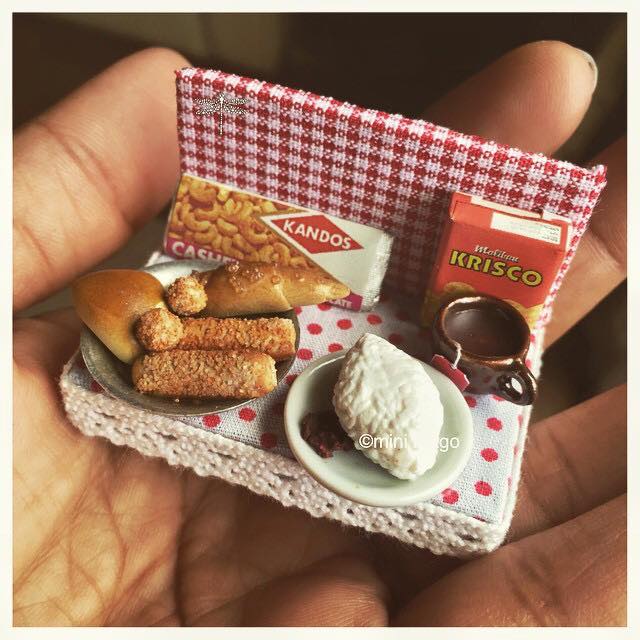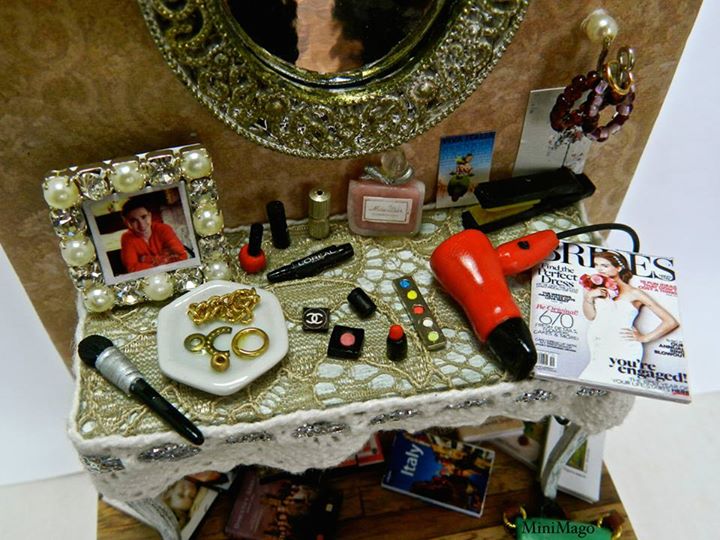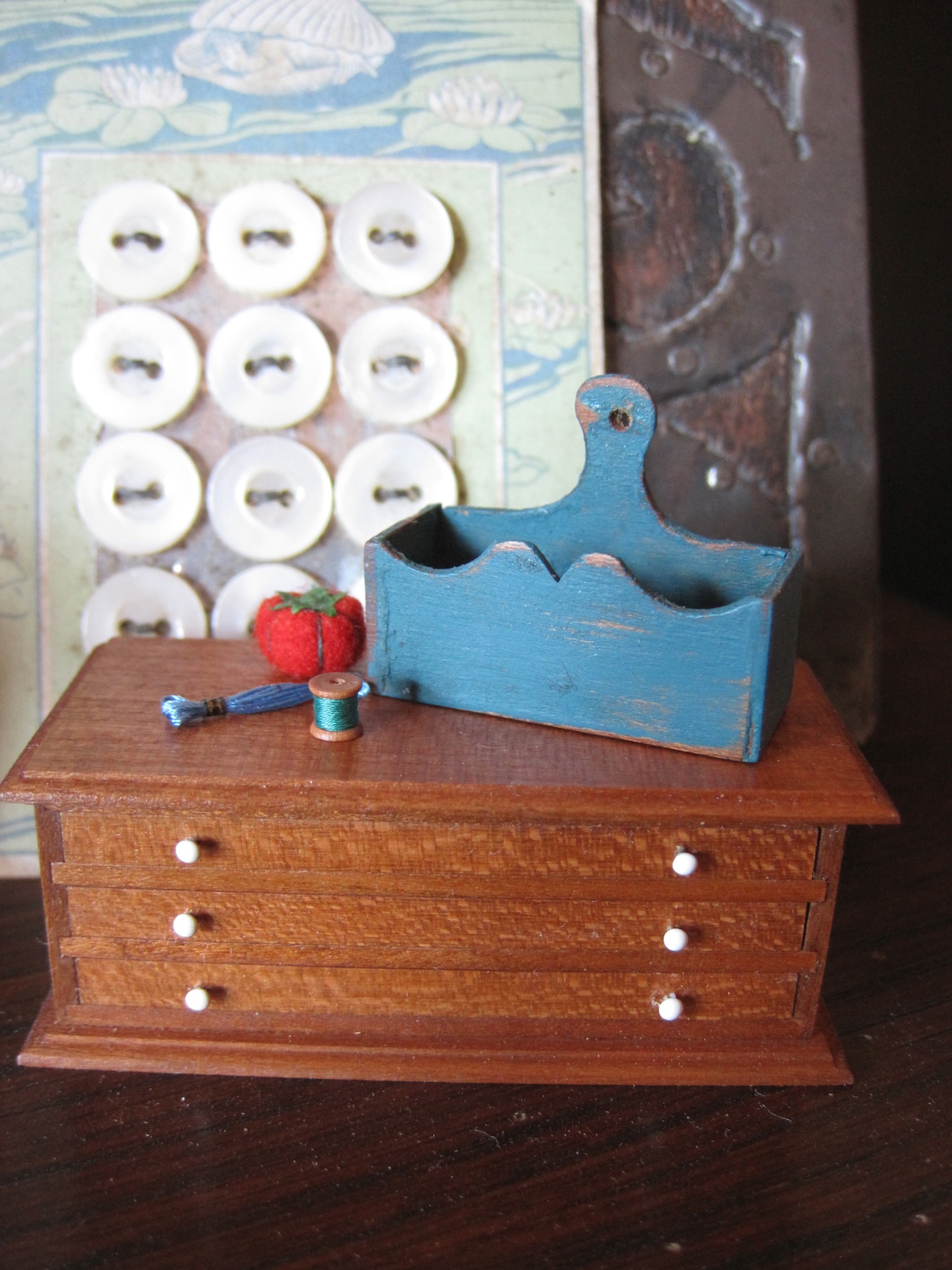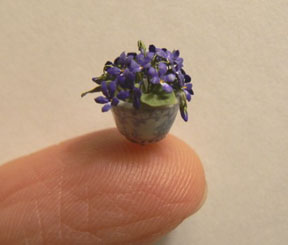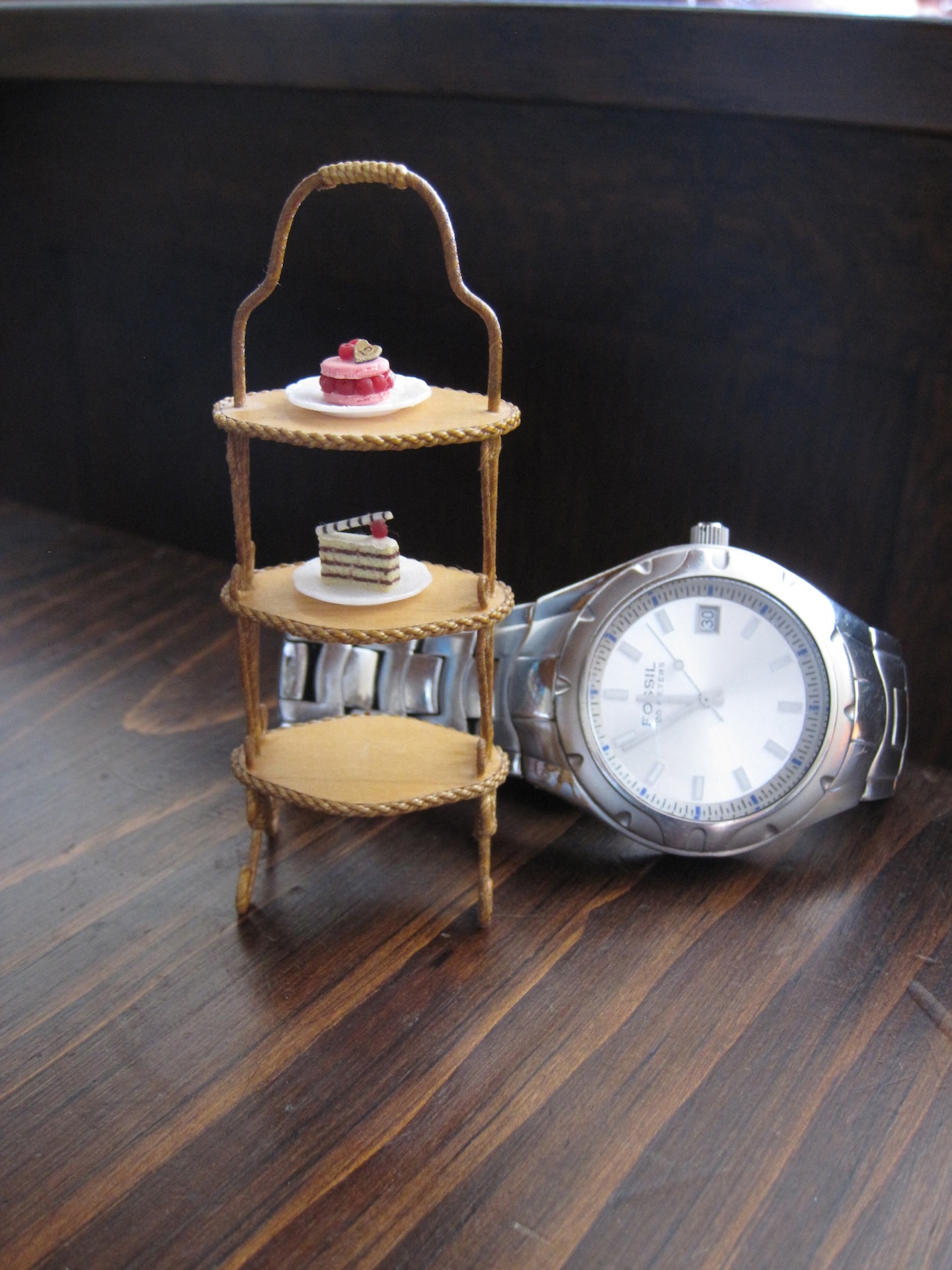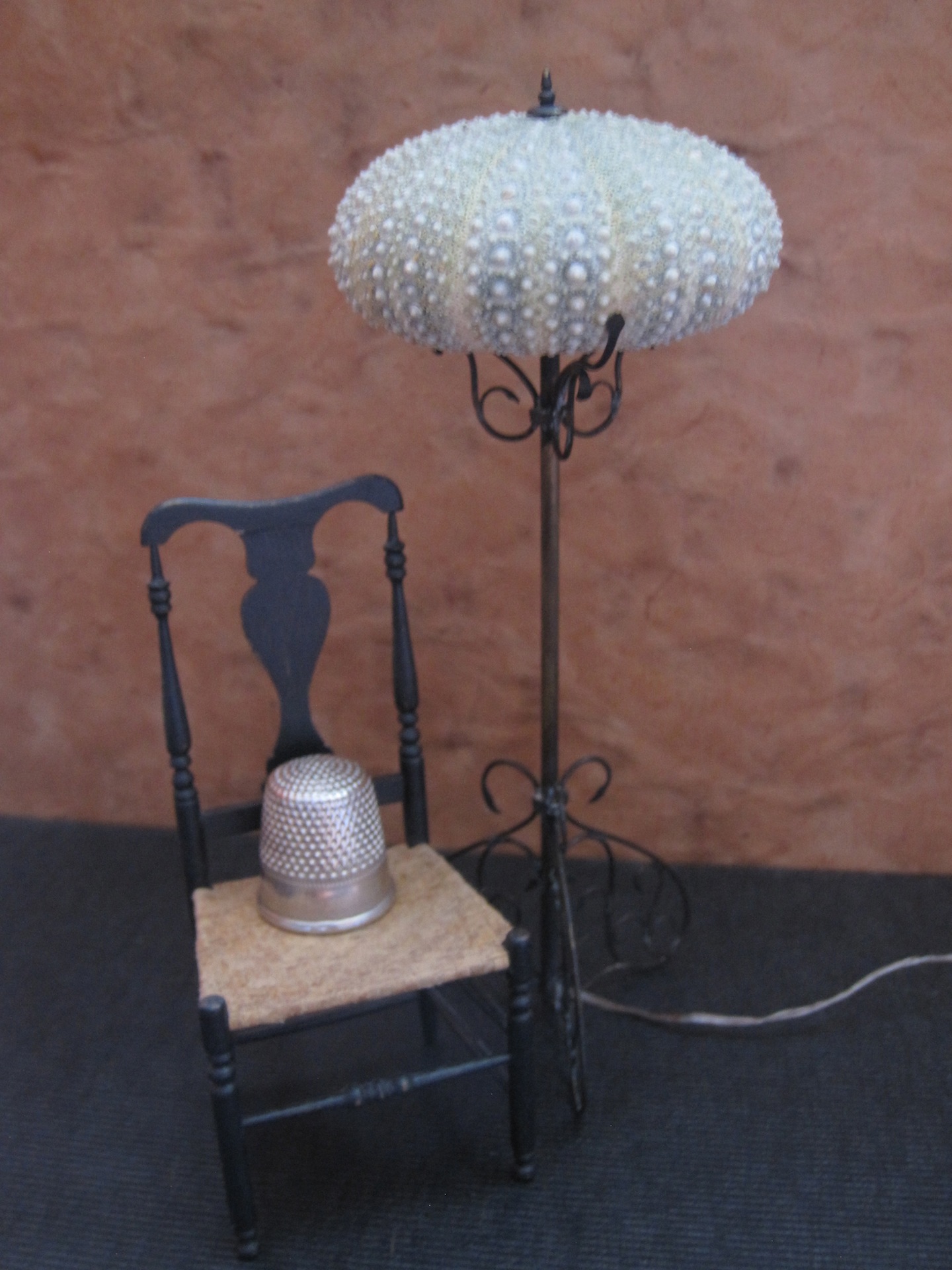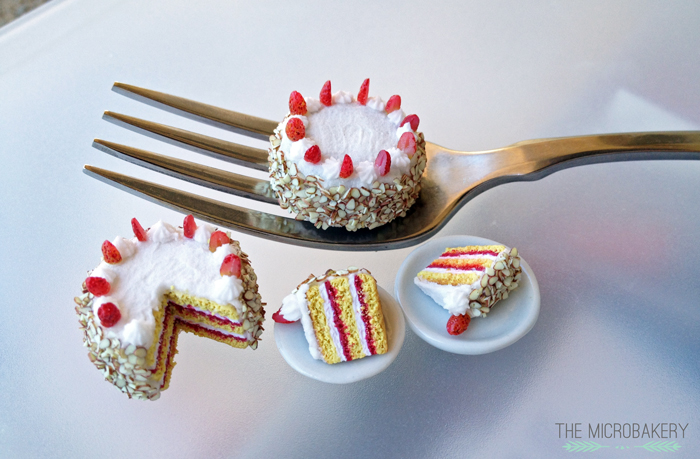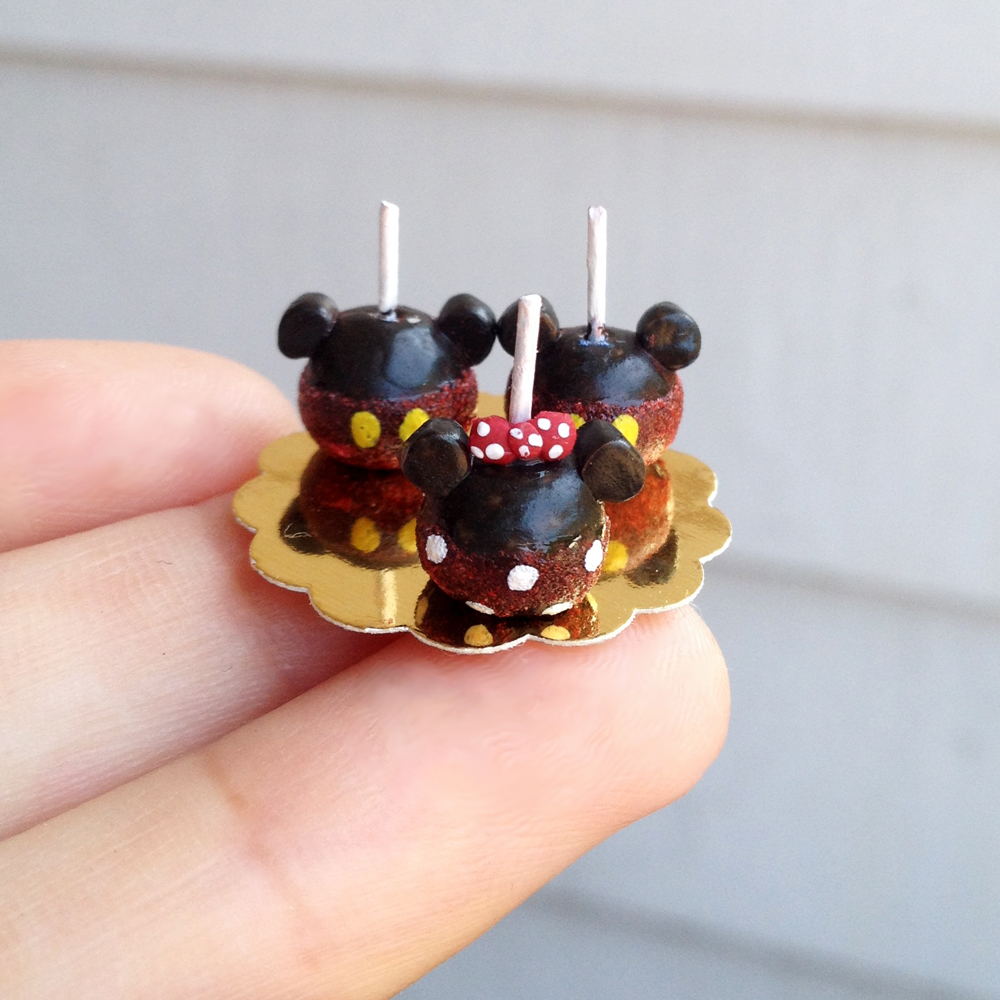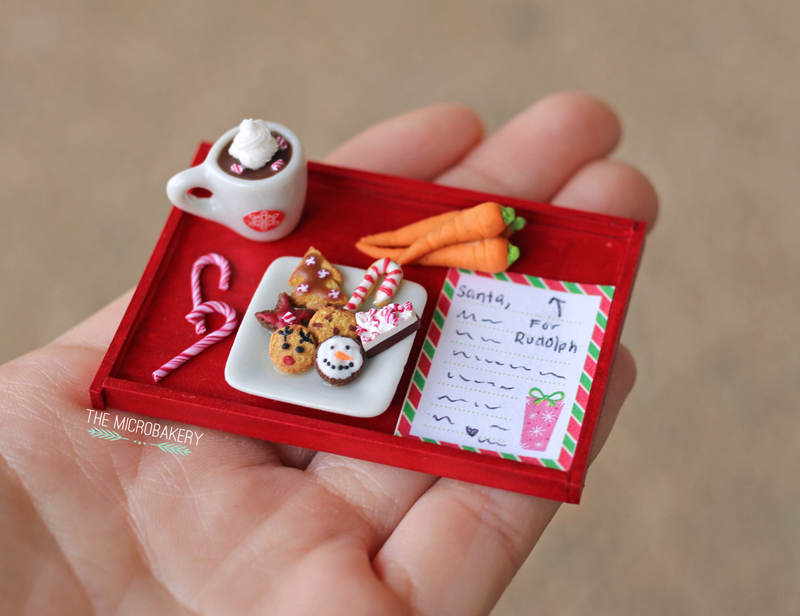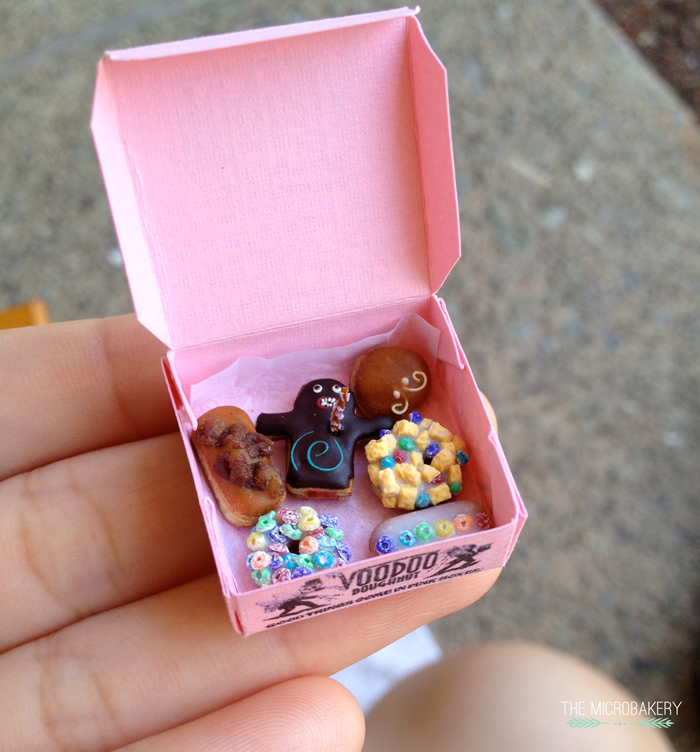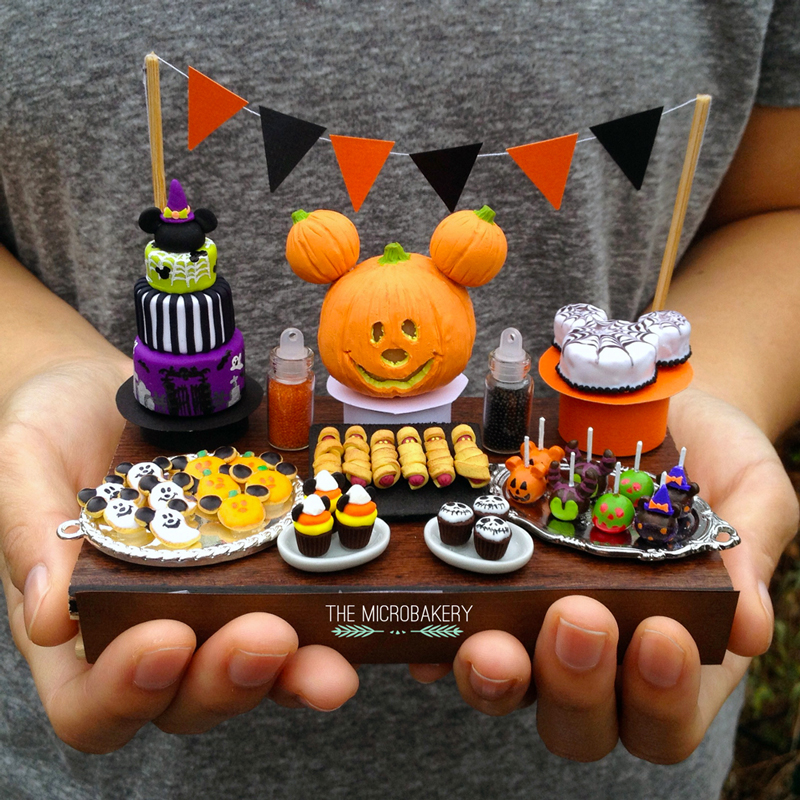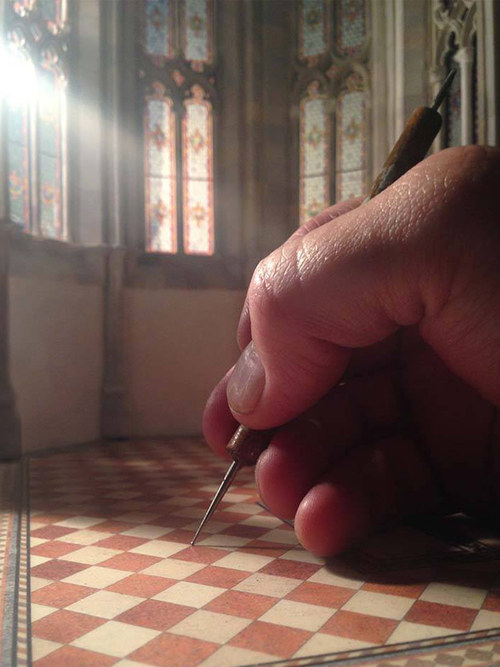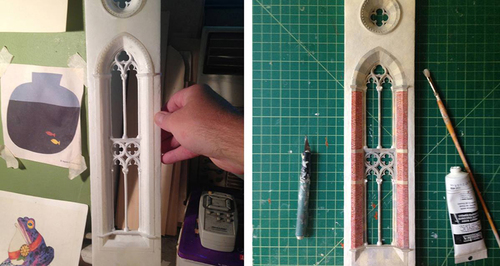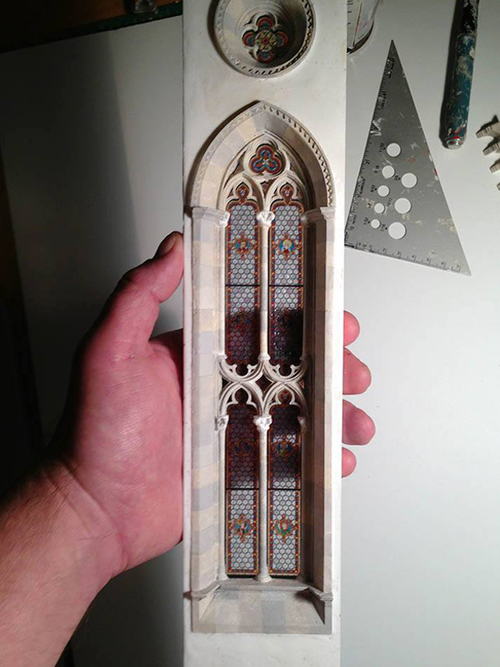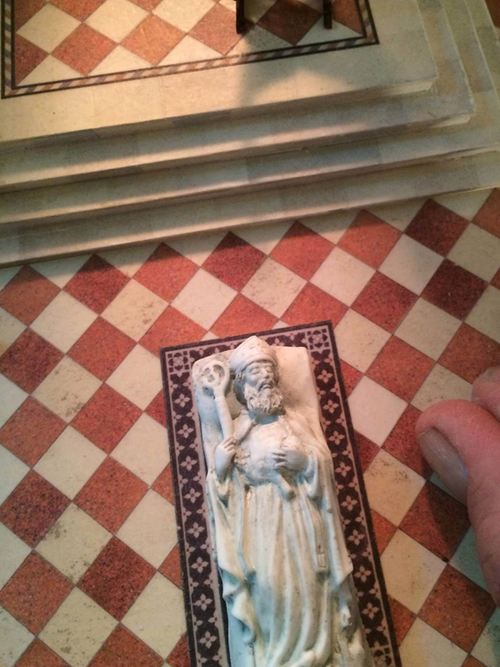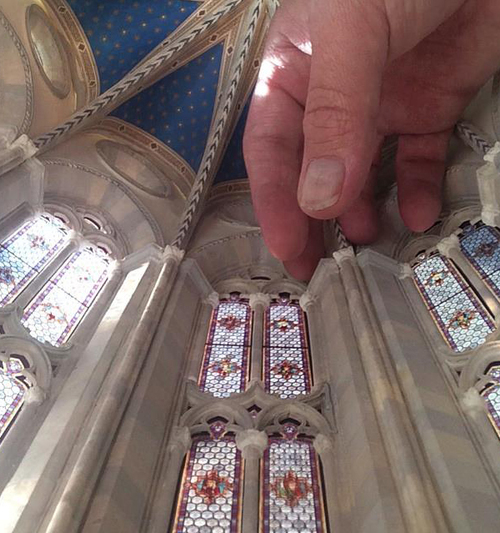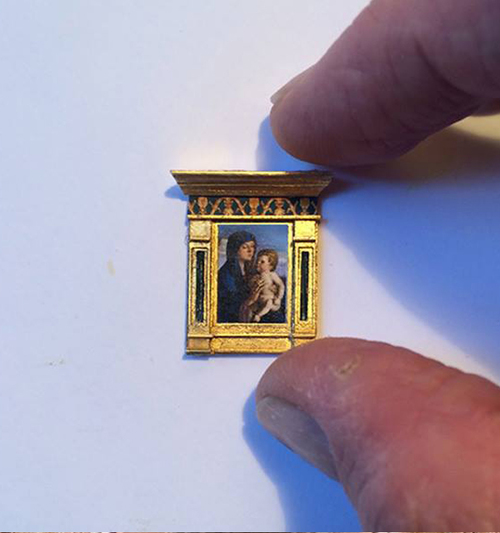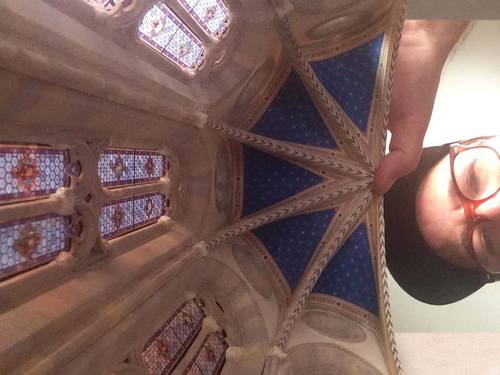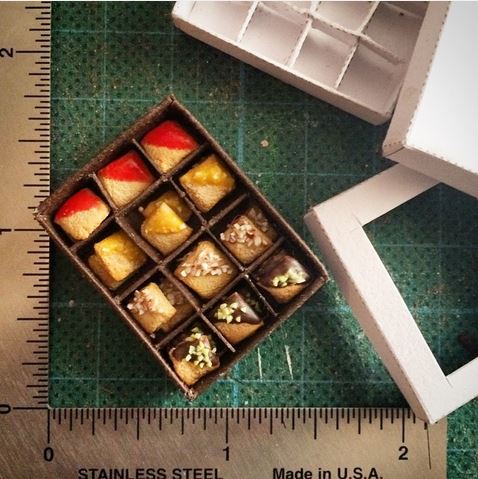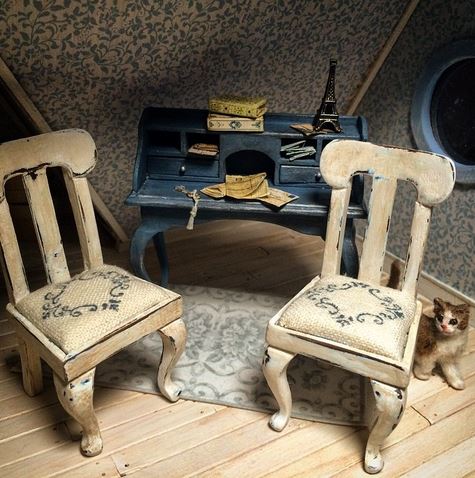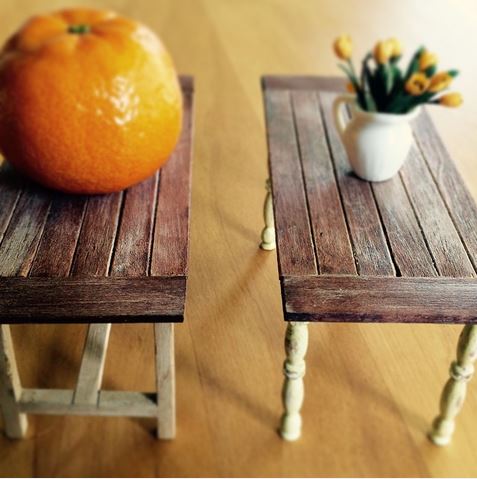Miniature Woodwork and Micro Woodturning by Iulia Chin Lee
| Website |
How did you get started in miniatures and micro woodturning?
 I met Johannes Michelsen at my first Northeastern Woodworkers Association annual showcase in 2001. He was the judge and demonstrator. In that show, I won first place in the miniature category. He also gave me the inspiration for miniature turning.
I met Johannes Michelsen at my first Northeastern Woodworkers Association annual showcase in 2001. He was the judge and demonstrator. In that show, I won first place in the miniature category. He also gave me the inspiration for miniature turning.
In 2010, I won ‘Best of Show’ along with one first place in ‘Case Furniture,’ one first place in ‘Table’, one second place in ‘Spindle Turning,’ and one first place in ‘Miniature.’ Those first three pieces competed and were judged against full-size work.
What materials do you use to make your miniatures?
I use lots and lots of different kinds of wood. It all depends on the piece I’m making. I’ve used acrylic, rosewood, ebony, brass for candlesticks and so much more. I prefer wood because every piece is different. The wood speaks to me and determines what the shape should be. Sometimes a nice pattern might be visible on the surface of the wood, but you might need to cut out that beautiful pattern to make your piece. I prefer to keep that pattern and figure out what shape will go with that particular pattern of wood.
Were you formally trained in the arts?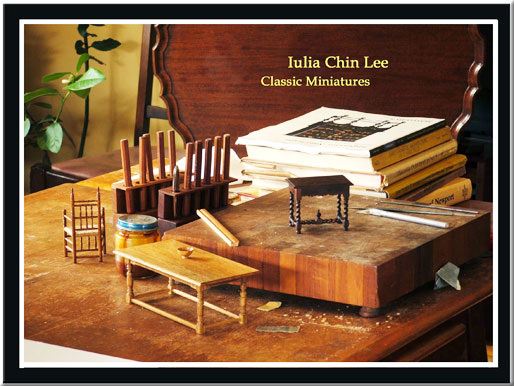
I have a double masters degree in oil painting and ceramics. As for woodworking, to cut the wood is one process, but to finish it is a whole other process. It can take me up to 2 days or more to finish a miniature woodturning. I’m most known my furniture. I started making miniatures in 1992. I prefer to spend time making miniatures rather than naming them. And so, I don’t name my pieces. I finish them on the lathe. Once I’ve removed a piece from the lathe, you can’t put it back on again.
What types of miniatures do you make?
As for the scale I work in, the scale of a miniature truly depends on the person’s perspective. I’ve been working in artistic woodturning for 20 years now. You simply cannot make two identical pieces because you can never find two identical pieces of wood. I use dried wood that’s been treated.
Favorite memories in your miniature woodturning career thus far?
There was a young boy who was fascinated with my work at a show. One of the pieces of furniture had a spinning top inside the drawer. I took tweezers and placed it in his hand. Turns out, years later he became a woodworker himself.
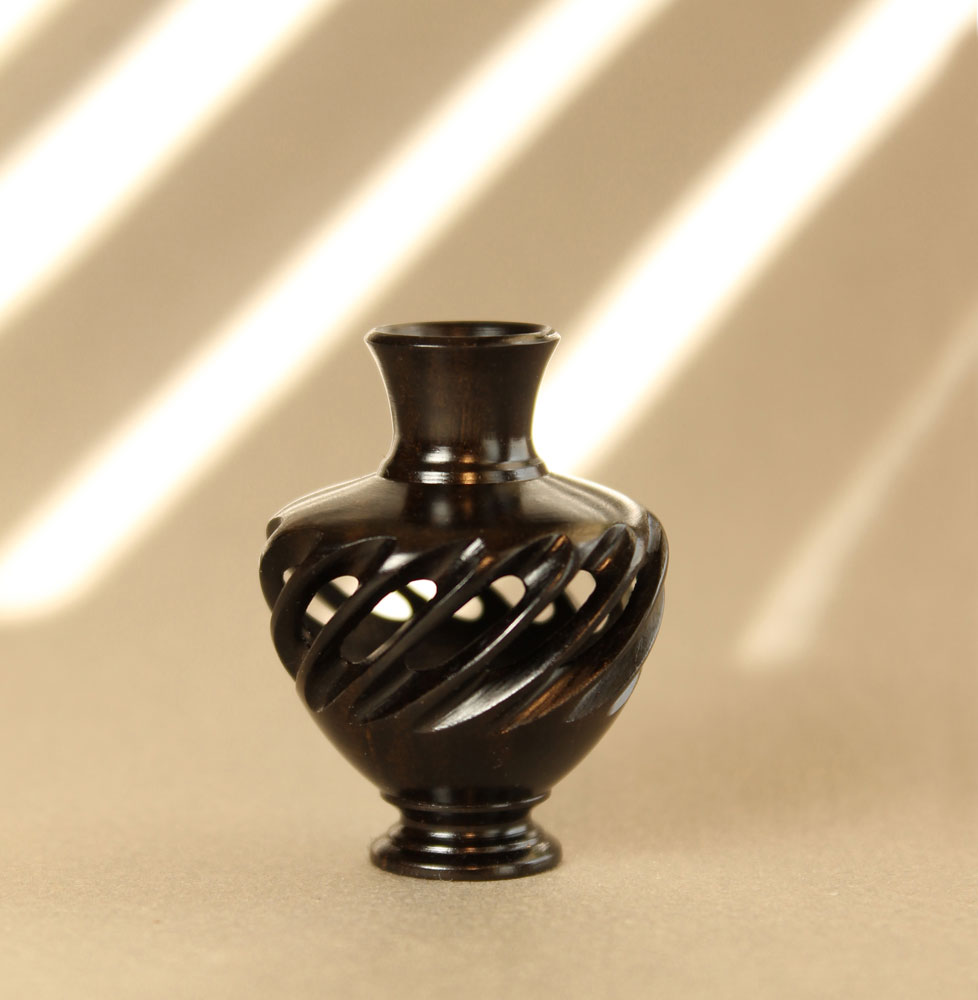 When I worked with cupboards, I made real joints, all dovetail joints. I won first place for my miniatures in a full-size woodworking competition.
When I worked with cupboards, I made real joints, all dovetail joints. I won first place for my miniatures in a full-size woodworking competition.
One of my earliest miniatures was a Chippendale chest of drawers and a Queen Anne stool for my son.
What’s been especially challenging thus far?
Sometimes it’s very hard for people to get over the miniature scale of my pieces and those of other artists working in miniature. For the Northeastern Woodworkers Association, I always entered the miniature category and always won first place. However my works were becoming lost in the exhibition space. People didn’t even go to see my works. So I entered to be judged along with the full scale wood pieces.
Woodworking is a very competitive industry. It’s important for me to see my work and not think it’s a toy. I think that’s been the biggest challenge. When I show my work at a miniature show, they think it’s a toy or dollhouse. But my work is not just that. I’ve made brass turned drawer handles and so much more.
As I mentioned, I love to challenge myself. In addition to entering my work in the category of Miniature, I enter my miniatures to be judged against full‐size work. Below are some prizes I have won:
- 1st place in Spindle‐turning, 2007 (spiral candlesticks)
- 1st in Case Furniture (blanket chest)
- 1st in Table (colonial walnut table)
- 1st in Marquetry, 2011 (room box)
- 2nd place in Chair (ladle‐back chair)
- 2nd in Vase‐Hollowing (lidded vase)
- 2nd in Bowl‐Hollowing (nestled bowls)
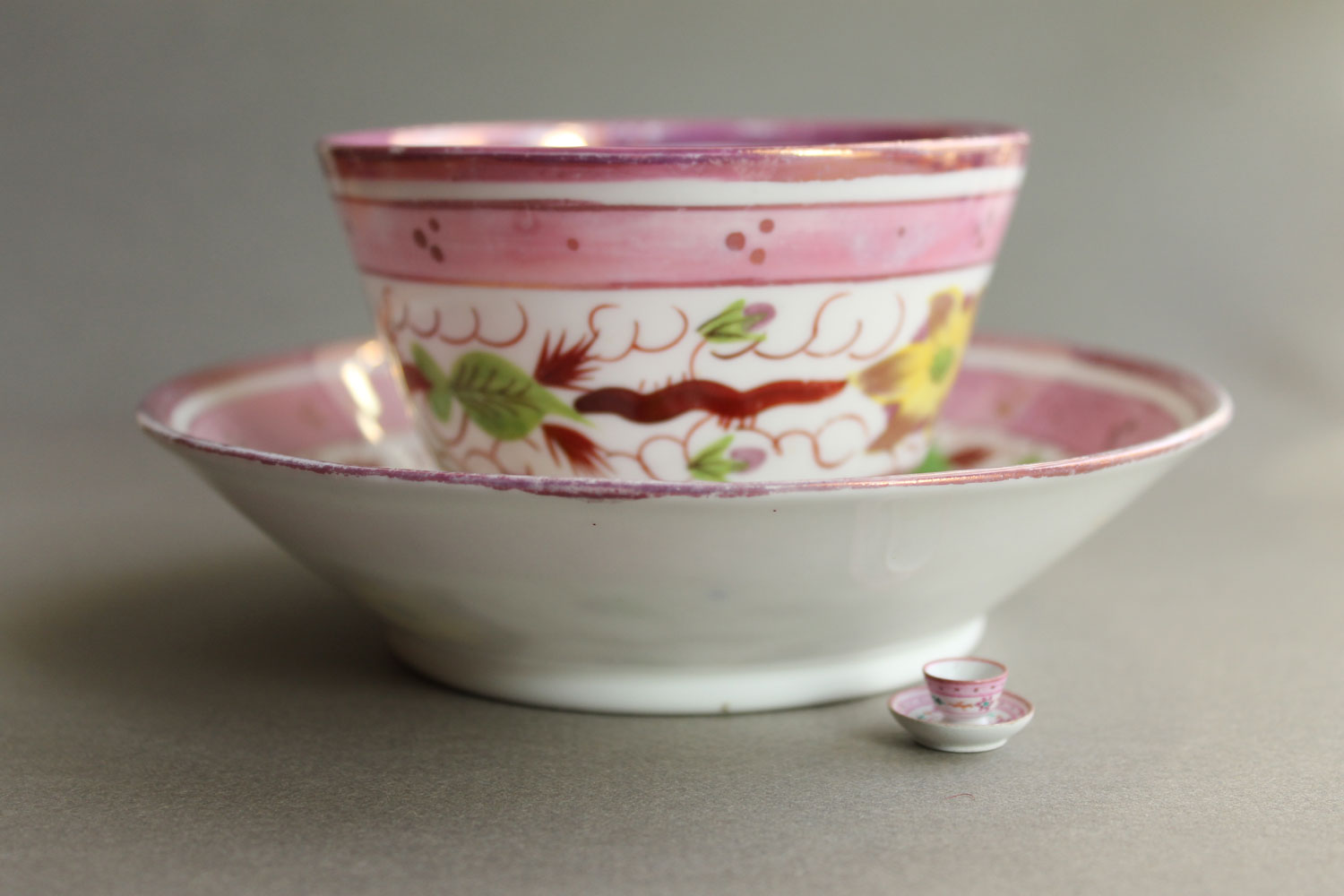 What inspires you?
What inspires you?
I have an interest in arts and cultural history. This interest comes together when I make furniture. I make only historically accurate pieces. I came across a Dutch Kas cupboard from 1730 at a local shop in Kingston, NY. It was a full size piece, so I made some drawings of the work, found the appropriate wood, then made a replica myself.
In 2012, there was a special exhibit in the Museum of the Connecticut Historical Society. The title was ‘A Craft of Tradition ‐ Current Work by The Society of American Furniture Makers.’ My miniature Dutch Kas was chosen among the 34 national, full‐size finalists.
What’s your favorite piece?
Whenever we as artists create a piece our mood (physical, mental, emotional) is always different. Sometimes everything simply comes together to break a record, as athletes in the Olympics might do. 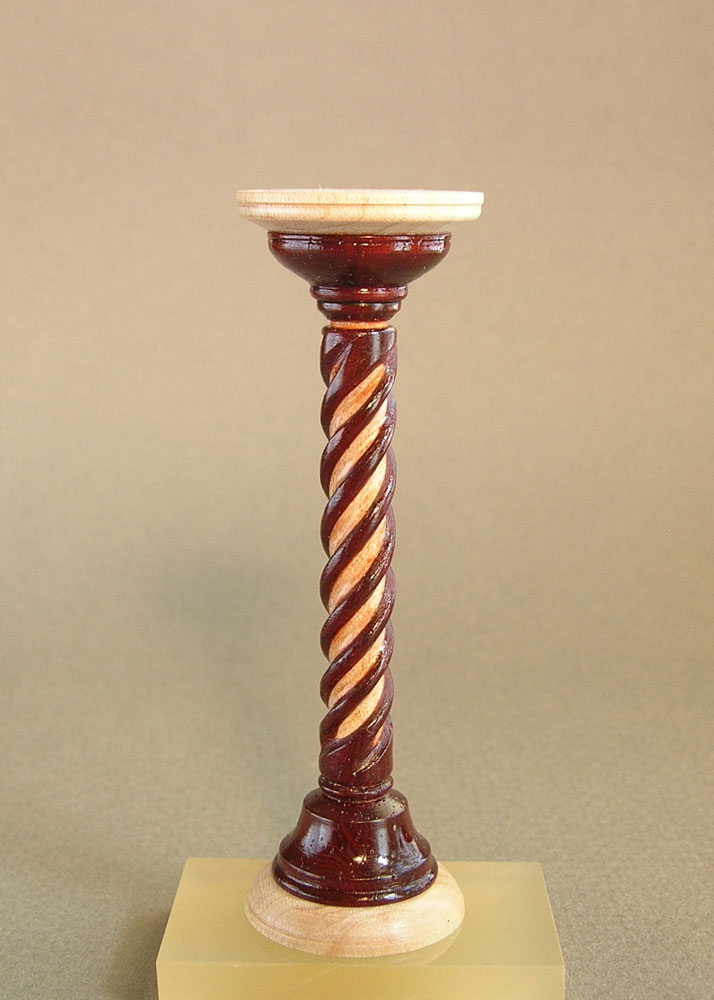 Everything is combined together in that one moment to create greatness.
Everything is combined together in that one moment to create greatness.
Wood is like a jewel. When the wood speaks to me, I have to decide how to cut the wood.
What do you want miniature enthusiasts to know about you?
I have a few favorite pieces that have taken me months or more than a year to create. Sometimes when I encounter a roadblock in my work, I have to breakthrough somehow. I know that if I created three beautifully jointed doors of a dresser one night, I should not go to sleep and work on the 4th door in the morning. It’s a true challenge, but when I’m on a roll and in a creative state of mind, I do not sleep. I know that by going to bed I would lose whatever magic I had that day. I have good days and bad days. When I have a good day, I don’t want to stop. And that’s why artists have very irregular hours.
To see more of Iulia Chin Lee’s miniature woodwork and micro woodturning, visit the Chin Lee Miniature website.
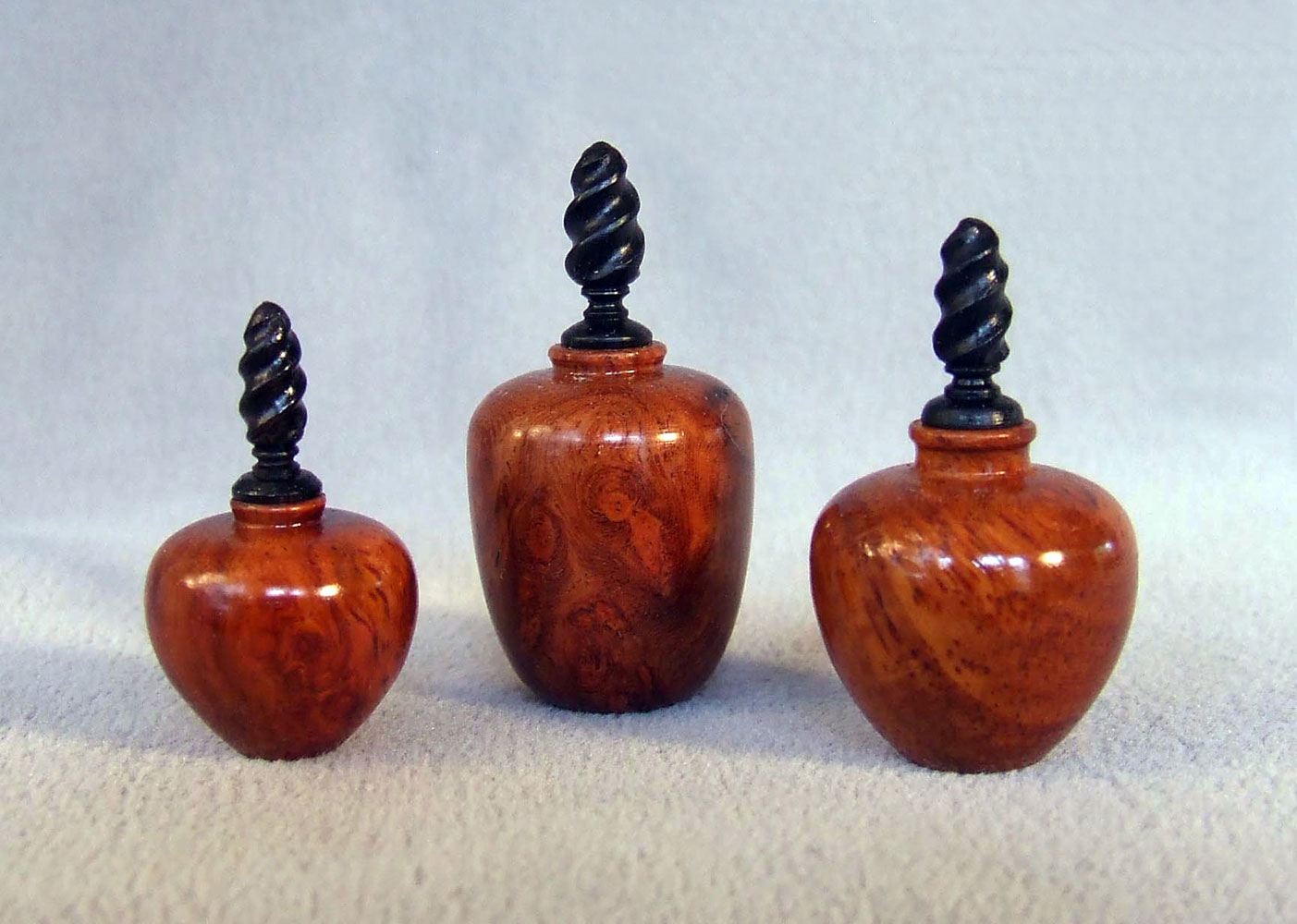
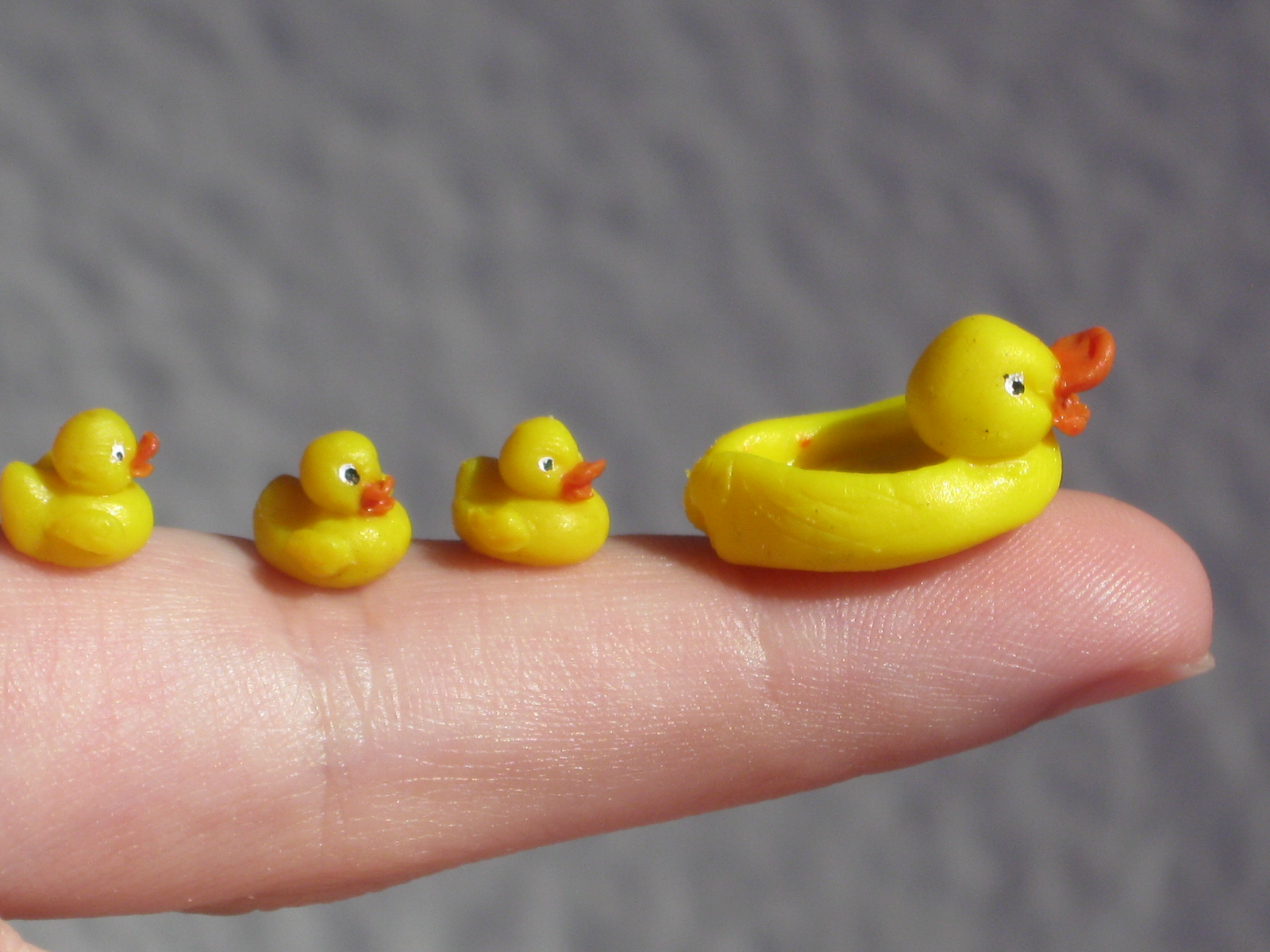 What’s your earliest memory with miniatures?
What’s your earliest memory with miniatures?
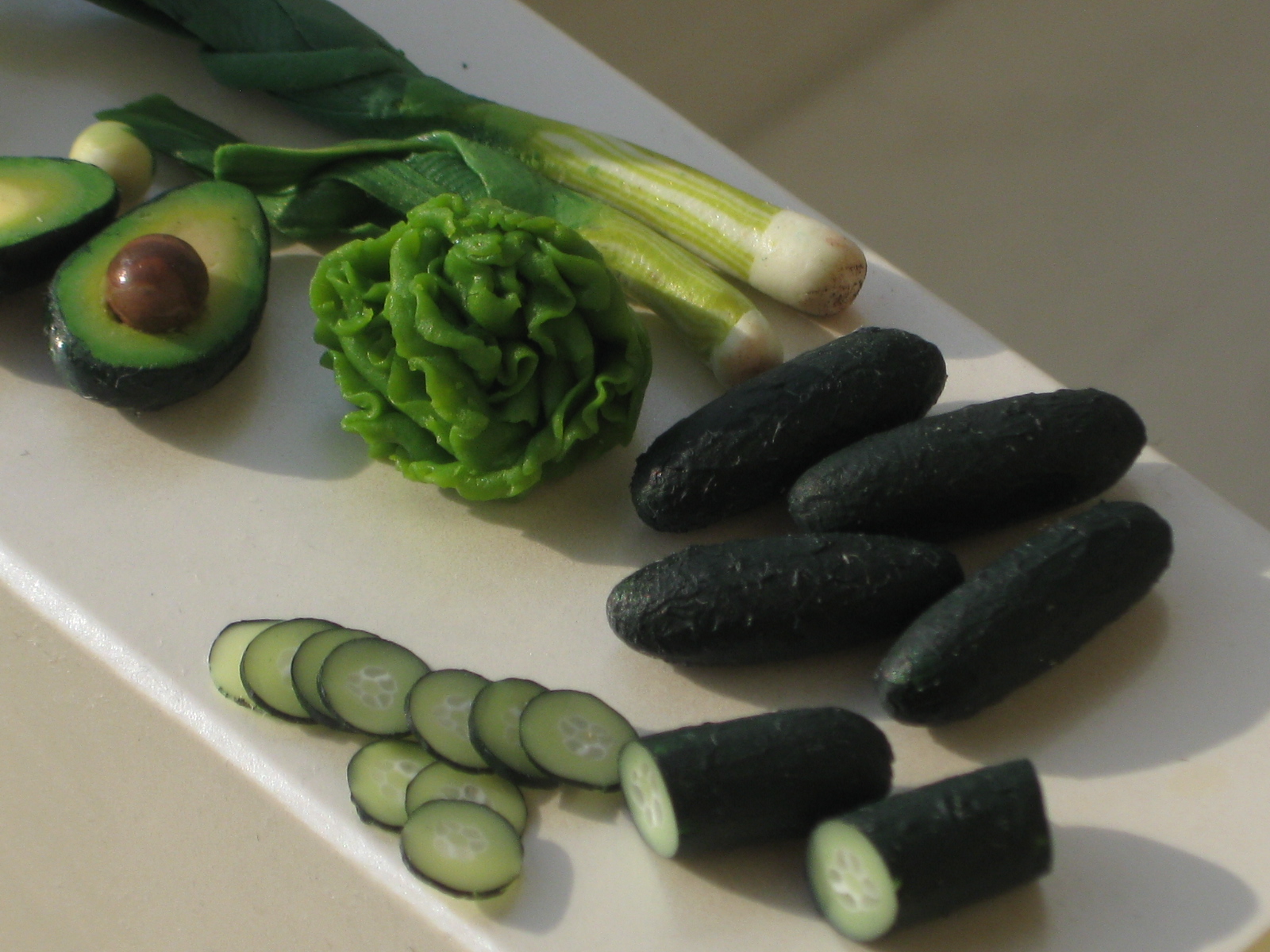 Since I mostly make miniature food, I get the inspiration from real food. Everything around me inspires me, I’m always looking for everyday items that could be transformed into a miniature or a tool for making one.
Since I mostly make miniature food, I get the inspiration from real food. Everything around me inspires me, I’m always looking for everyday items that could be transformed into a miniature or a tool for making one.